Motorola Razr Plus: nixed the chin
Two-minute preview
The Motorola Razr 2023 returns to the US starting with the Motorola Razr Plus (that'll be the Motorola Razr 40 Ultra for those in Europe), after a hiatus for which Motorola plainly admits its phone wasn’t good enough to sell on American shores. After studying the best Samsung phones for a while, the Razr returns looking little like its flip-phone predecessor. It has the Galaxy Z Flip 4 beat in a few interesting and useful ways, but we don’t yet know what Samsung has up its sleeve for the next generation, coming soon.
This means the Motorola Razr Plus will have an uphill climb, and on paper the route doesn’t look easy. For starters, it uses last year’s mobile platform – the same as the Galaxy Z Flip 4 and the Motorola Razr 2022. It costs the same as Samsung’s older phone too, which is an especially risky move considering a new Galaxy Z Flip 5 will likely hit the market in just a couple of months; with faster components for the same price.
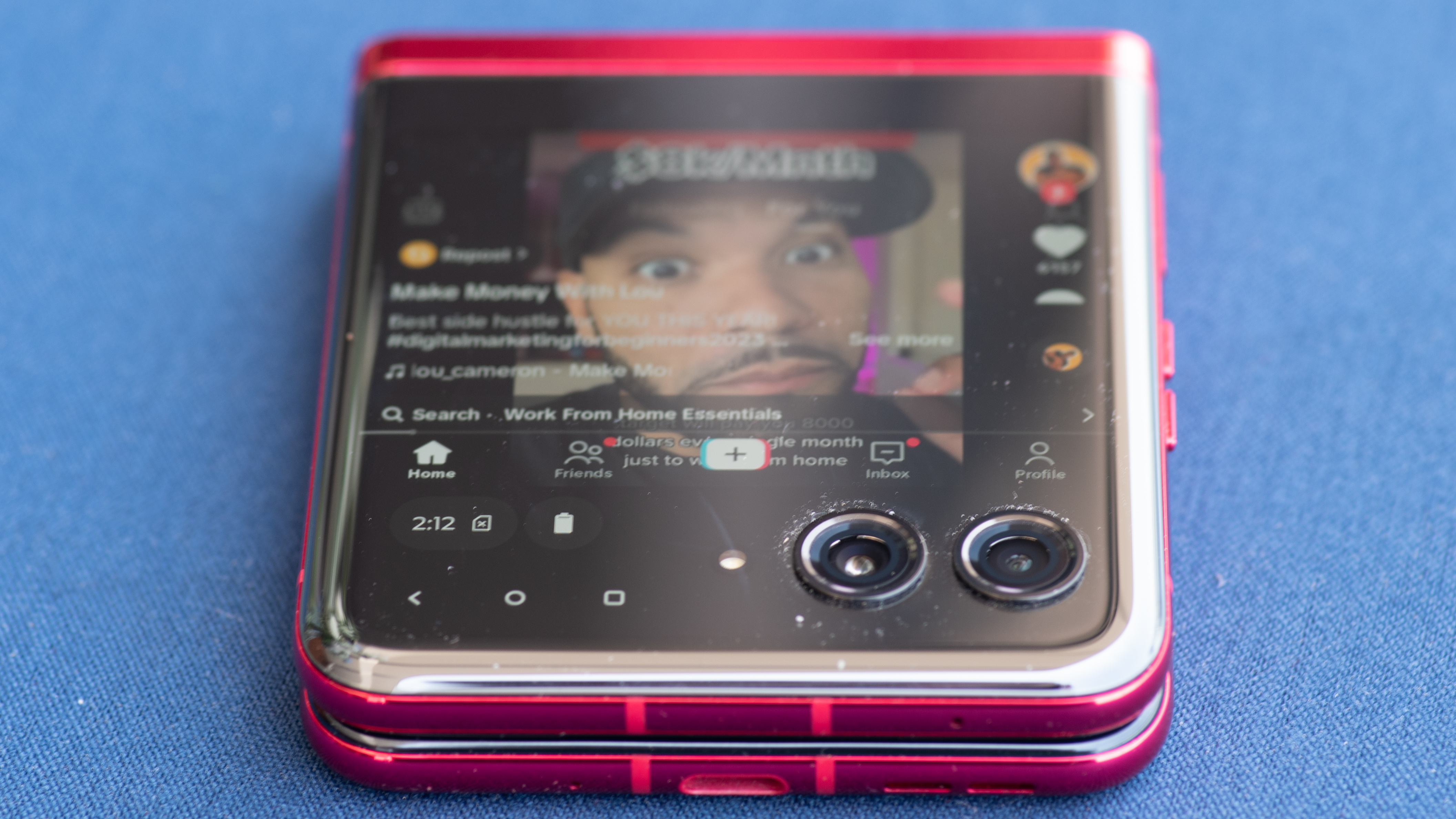
Motorola instead offers a big external display and mixed messages. The Motorola Razr Plus keeps you from missing out while helping you disconnect. You get the big display and the cool camera features, but you can also snap it shut when you’ve had enough. Except that the big cover display is a key selling point, so the Motorola Razr Plus never really leaves you sitting quietly idle.
I wish this phone cost a couple hundred less, and I suspect that the standard Motorola Razr (2023) to come – without the cover display (called the Razr 40 in Europe) – will be a much more affordable phone and easier to recommend. For now, I’m excited to try the cool camera setup and the new cover display features when it comes time for an in-depth review in the near future.
Motorola Razr Plus: price and availability
- Available in Europe & UK June 2; pre-orders elsewhere June 16, stores June 23
- $999.99 / £1,049.99 (approximately AU$2,010)
- One configuration: 256GB storage and 8GB RAM
In the US, the Motorola Razr Plus is available for pre-order starting June 16, 2023, and will be in stores on June 23. Motorola is getting a jump on the foldable world by launching its phone in June. Samsung has traditionally announced folding phones in August for availability around the holiday season, and even Motorola’s last Razr phone in 2022 was announced in August.
The cover-screen-and-caffeine-free Motorola Razr (2023) is coming later this year, but Moto hasn’t given us a date yet. We also don’t know the price, but Motorola reps hinted that it will be considerably cheaper.
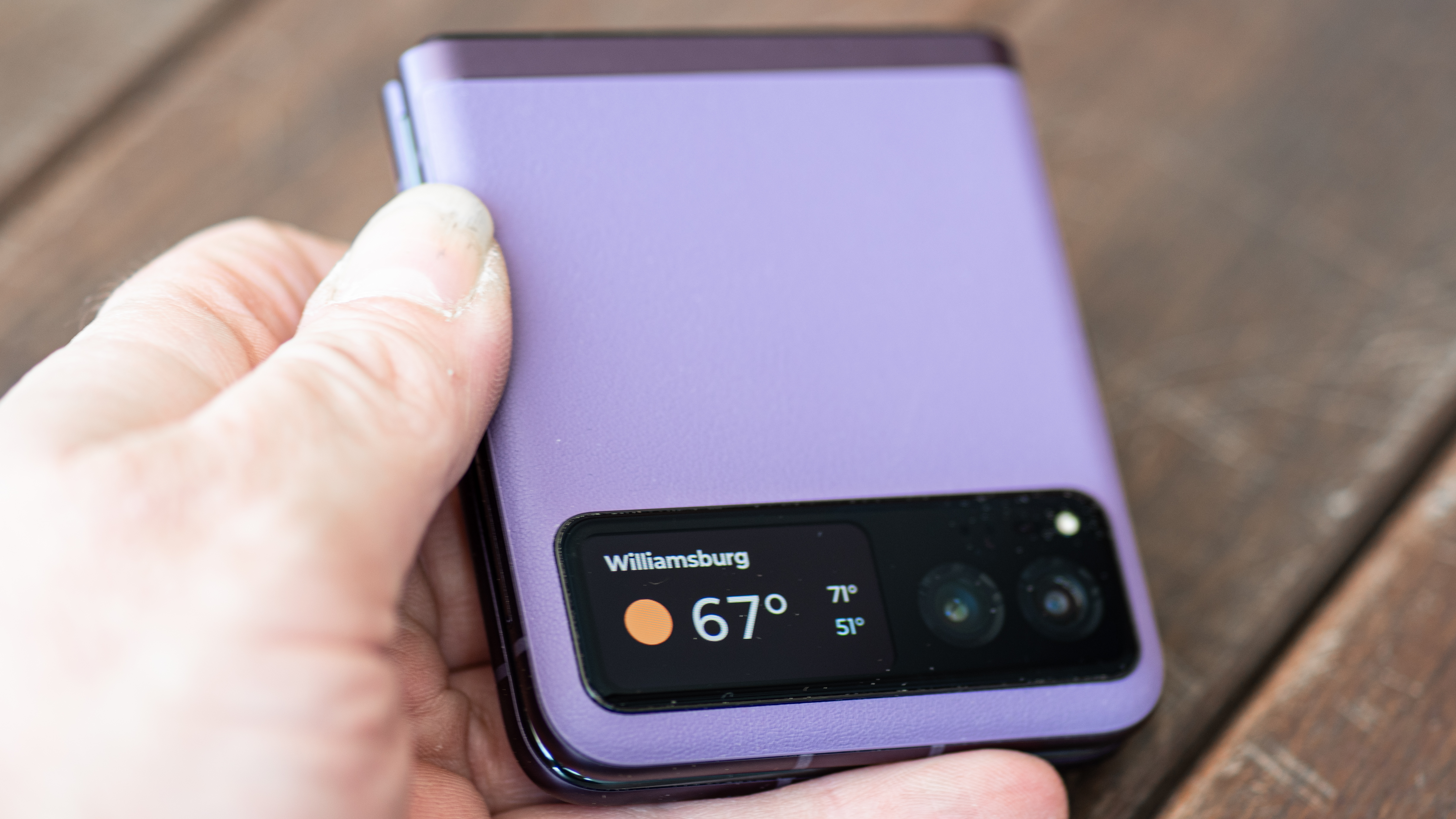
Like many other phone makers this year, Moto is only offering one configuration option for the Motorola Razr Plus: 256GB of storage and 8GB of RAM. That’s twice the storage of last year’s base model and the competing Galaxy Z Flip 4, though Samsung regularly gives you a free upgrade during promotions.
The 8GB of RAM seems paltry at first, but the two displays are rarely running at the same time, which would require more memory. It should be just enough.
Frankly, this phone should have been cheaper, but quite a few mobile carriers will be offering it for sale, so there should be some good contract deals once it's available. Still, considering it uses an aging Qualcomm Snapdragon 8 Plus Gen 1 chipset and the same amount of RAM as the Razr 2022 – not to mention it offers few significant spec upgrades – the Motorola Razr Plus should have been a less expensive phone than last year’s model.
The phone will be available in three colors at launch: black, blue, and magenta. The magenta shade will be available unlocked from Motorola directly or you can buy one from T-Mobile, the only US carrier that will sell the exclusive color.
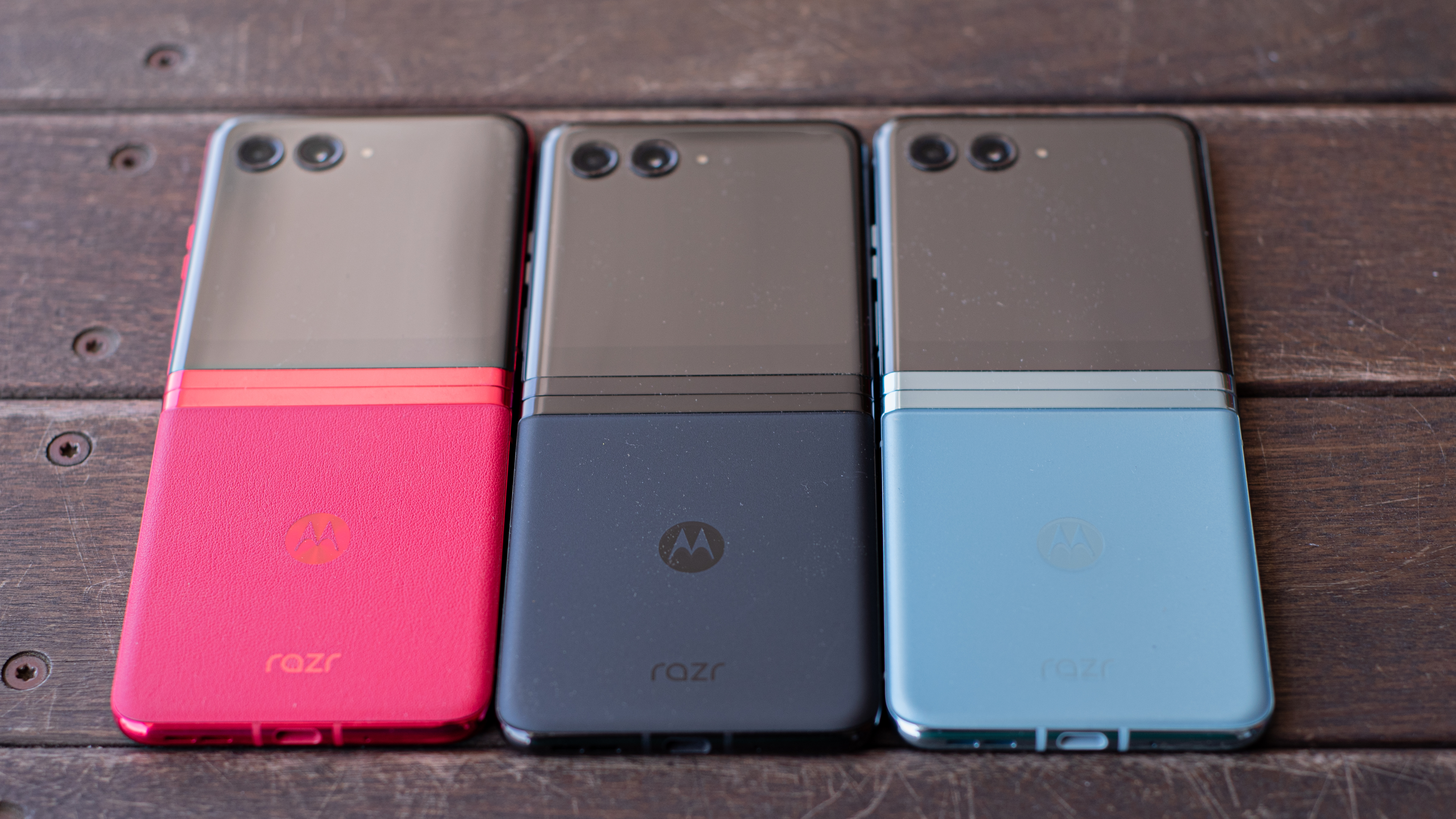
In Europe, the alternatively-named Motorola Razr 40 Ultra goes on sale at announcement – on June 2 – priced at £1,049.99 (approximately $1,315 / AU$2,010) in the UK (that's a £100 increase over the Razr 2022), with availability from major retailers like Amazon, Carphone Warehouse, Currys and John Lewis, as well as carriers like EE, Three and Vodafone.
As for the new standard model – called the Motorola Razr 40 in Europe – Motorola promises a release "in the coming weeks." The phone is priced at £799.99 (approximately $1,000 / AU$1,530), making it one of the most affordable clamshell foldables in the market to date. Similarly to the Ultra, the base Razr 40 will be sold by the likes of Amazon, Carphone Warehouse, Currys and John Lewis, as well as carriers including EE, Three and O2.
Motorola Razr Plus: design
- Like a Galaxy Z Flip 4 with a big cover display
- The vegan leather is somehow appealing
- Pantone color of the year and T-Mobile US exclusive: Viva Magenta
At first glance, you might have a hard time distinguishing between the Motorola Razr Plus / Razr 40 Ultra and a Samsung Galaxy Z Flip 4, especially when held sideways. Look closer and you’ll see straight through the Flip 4, while Moto's Razr manages to close flat, with no visible gap between the two halves of its clamshell design.
When the cover display is turned off, the Moto Razr Plus seems less impressive and unique, but the screen really dominates the face when it’s lit up, and it looks great. I even like the way the screen wraps tightly around the protruding cameras, which looks cool and futuristic, not like a compromise.
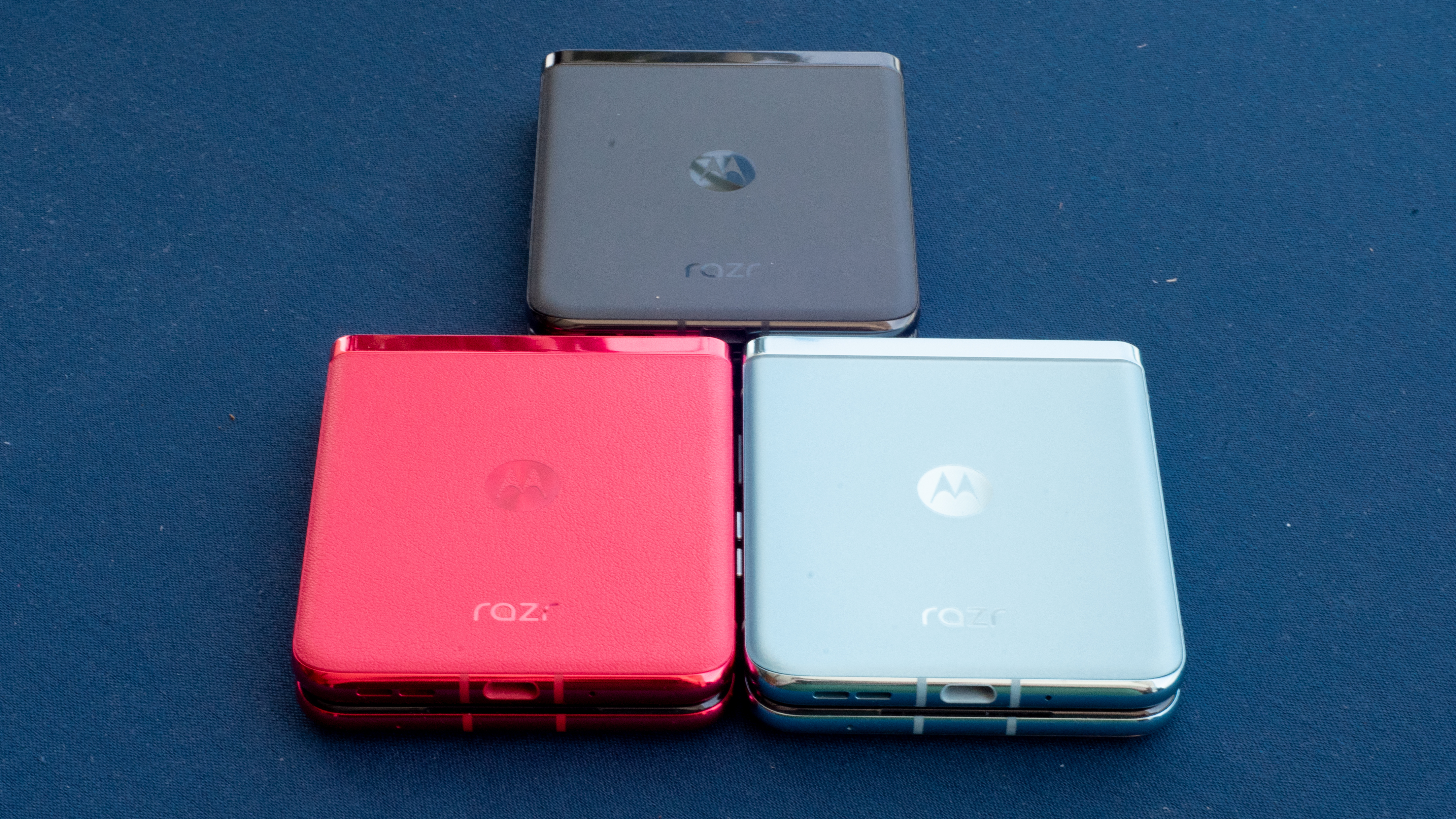
Every 2023 Motorola Razr and Razr Plus will launch in a color palette that corresponds to branded Pantone colors. For the Razr Plus, that means Infinite Black, Glacier Blue, and Pantone’s inexplicable color of the year, Viva Magenta.
The matte finish on the black and blue models looks professional and modern, but the vegan leather on the magenta Razr Plus presents itself particularly strongly. Motorola says that the vegan leather gives the impression that the phone is more durable, though they wouldn’t back up any such claim. I’ve certainly never seen leather shatter the way glass – even Gorilla Glass – can break.
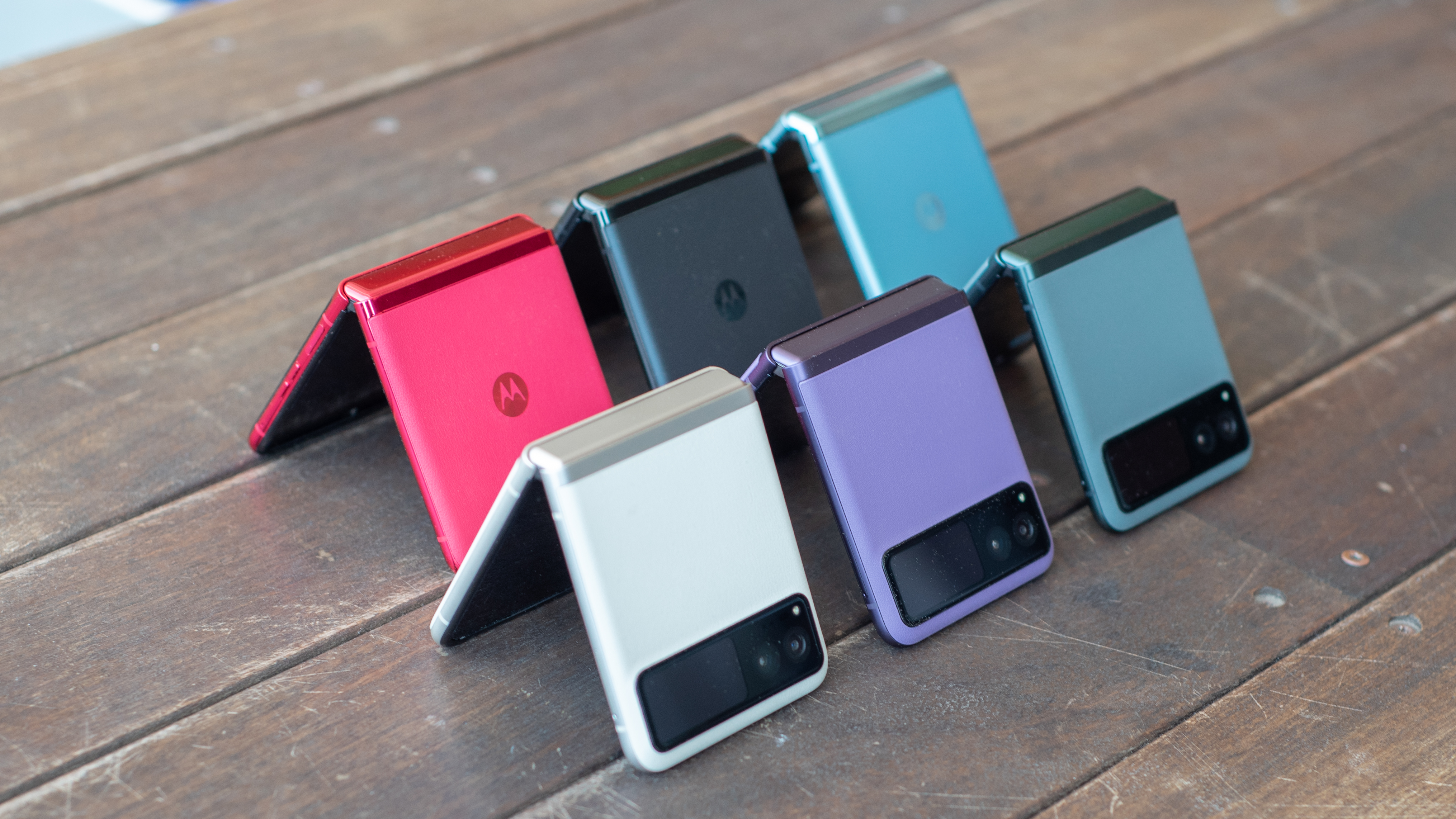
In fact, having seen the full vegan leather front and back on the less expensive Motorola Razr (2023), I almost wish that every Moto colorway included a faux leather option. On a flip phone, the back cover acts as a carrying case, so having a nicer finish would make it more pleasing to carry. The leatherish finish is also lighter than the glass back by a few extra grams.
While the hinge on the Motorola Razr Plus display slams shut tighter than on previous clamshell foldables, the phone isn’t sealed against the elements as tightly as Samsung’s folding phones. The Razr Plus is only IP52 rated against dust and water, for example.
That means it will do a good job protecting against sand and lint, but it isn’t guaranteed to keep even a light spray of water from damaging internal components. Samsung’s latest Galaxy Z Flip 4 is IPX8 rated, so you could take it for a dip in the pool.
There is a crease on the main internal display, but it is less noticeable than on the Galaxy Z Flip 4. As you can see in photos, you need to catch the light just right to see it clearly, though you can always feel it when you slide your finger across it. It isn’t unpleasant, but it’s still… there.
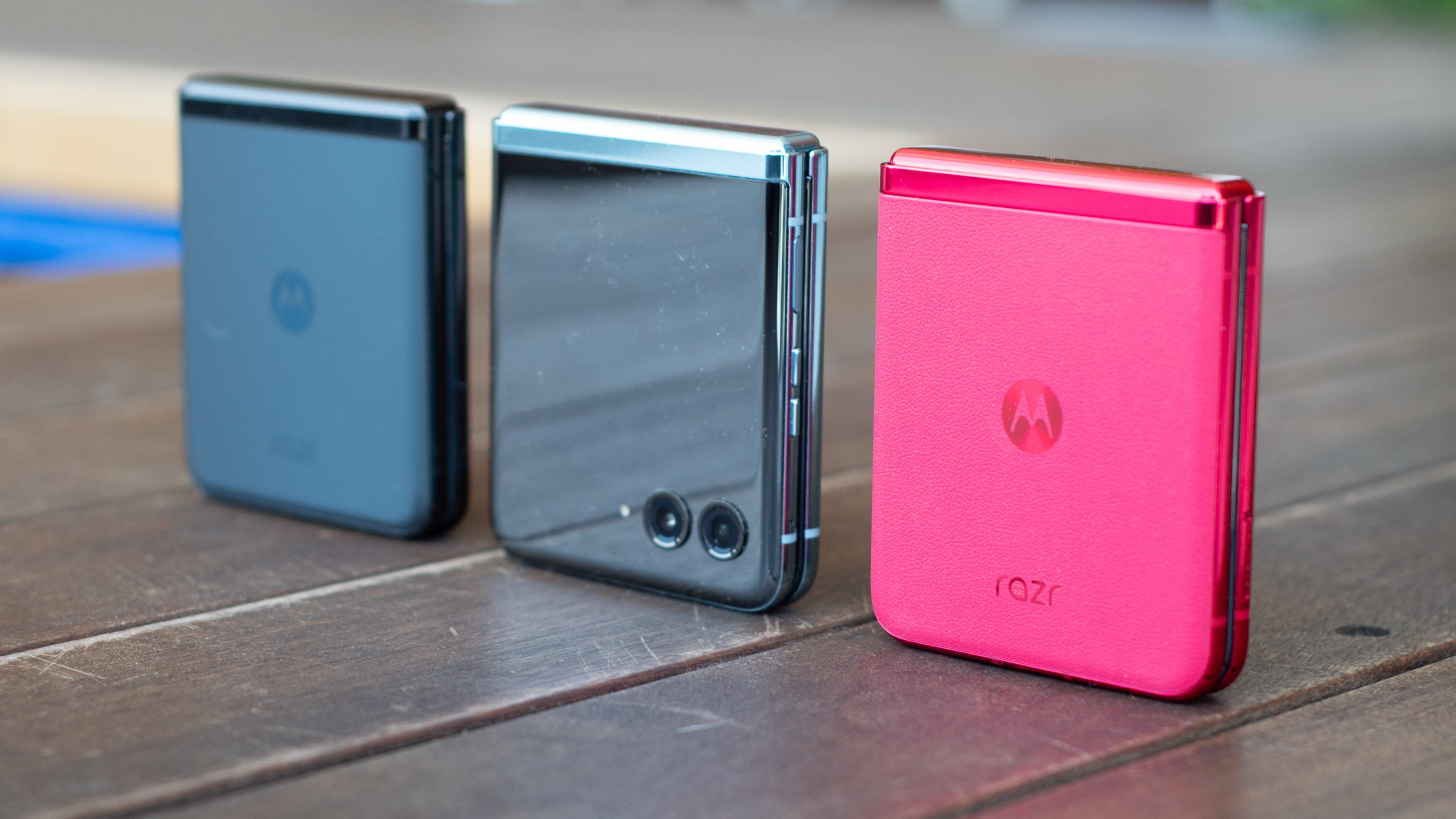
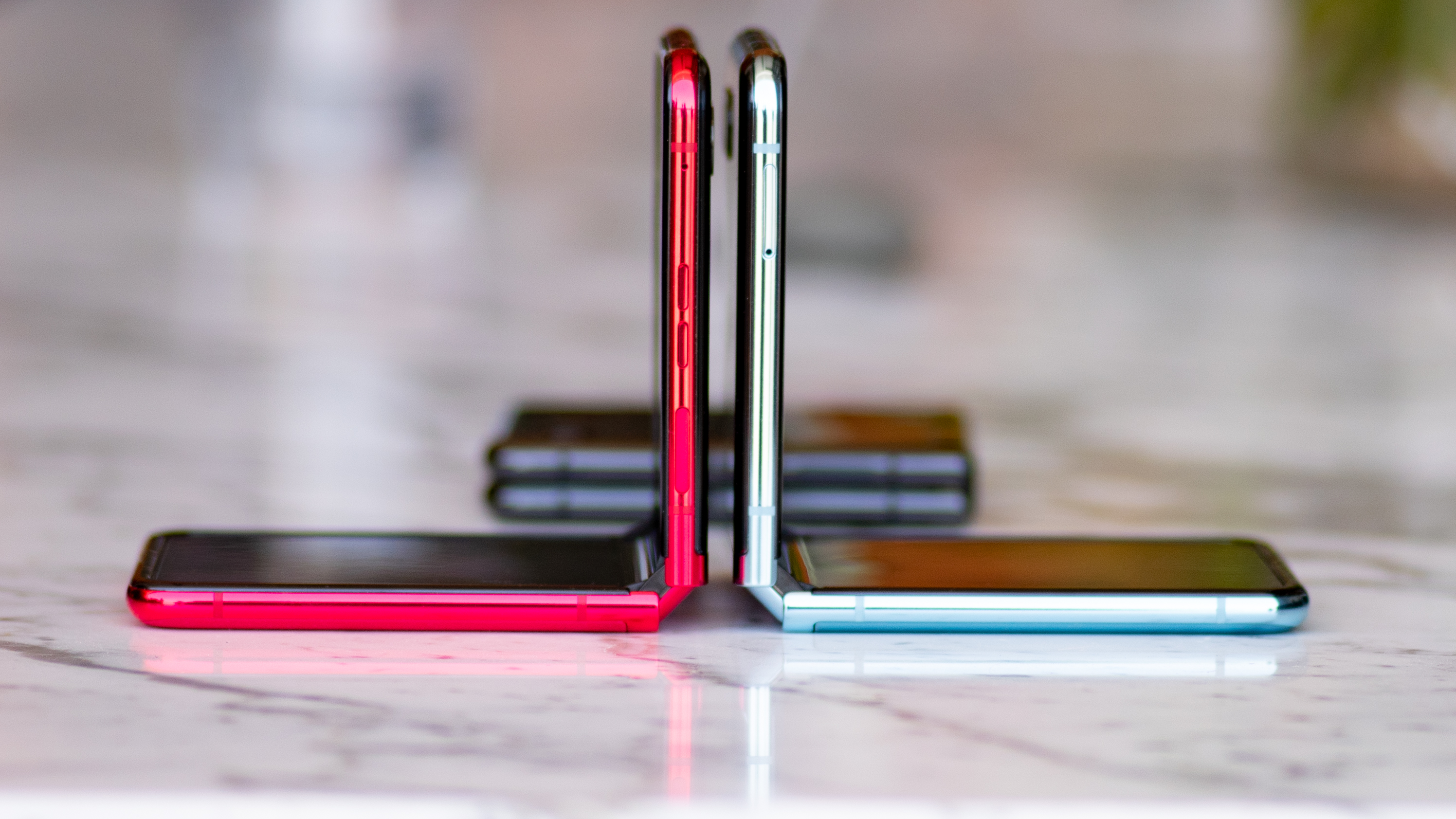
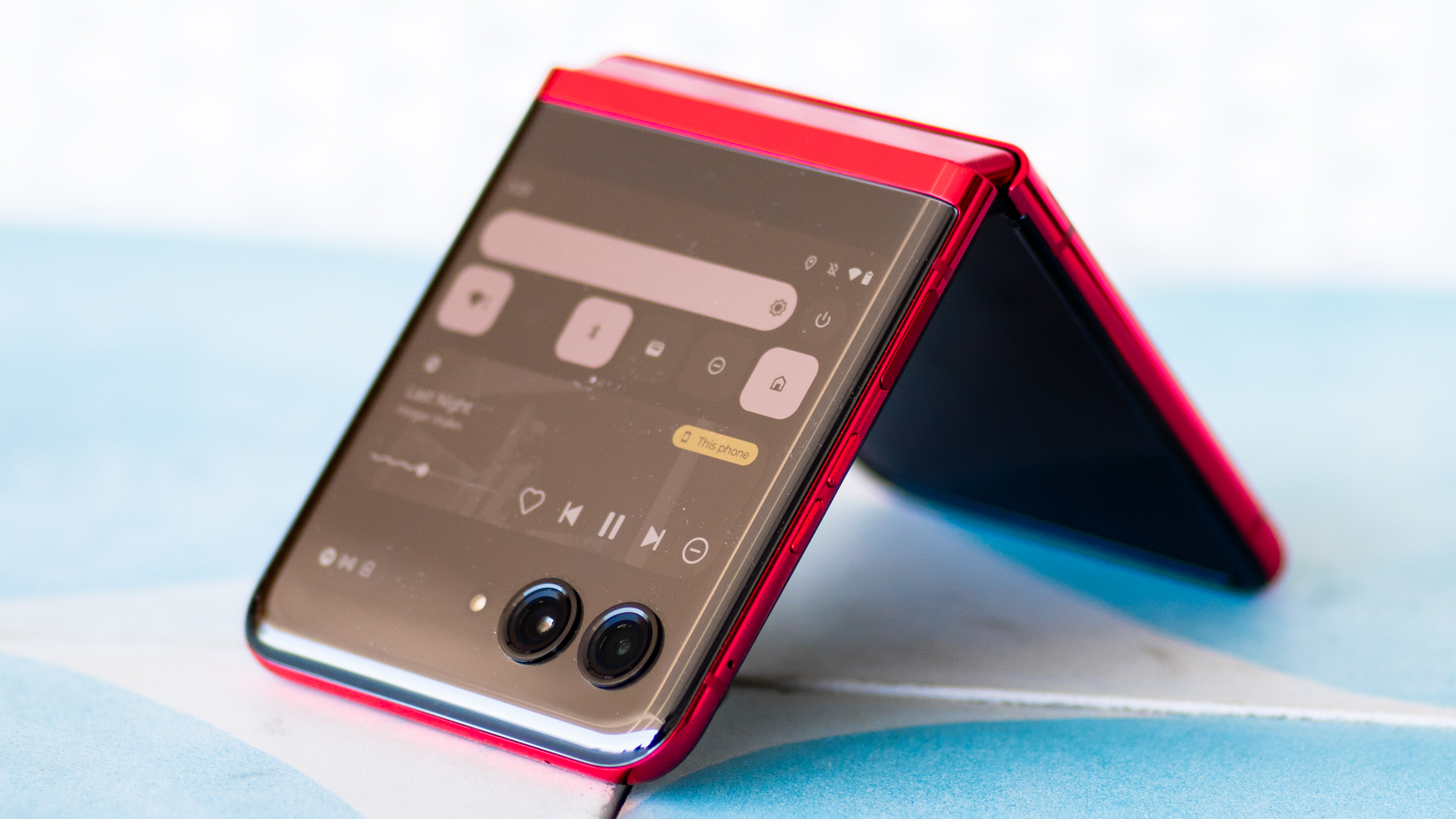
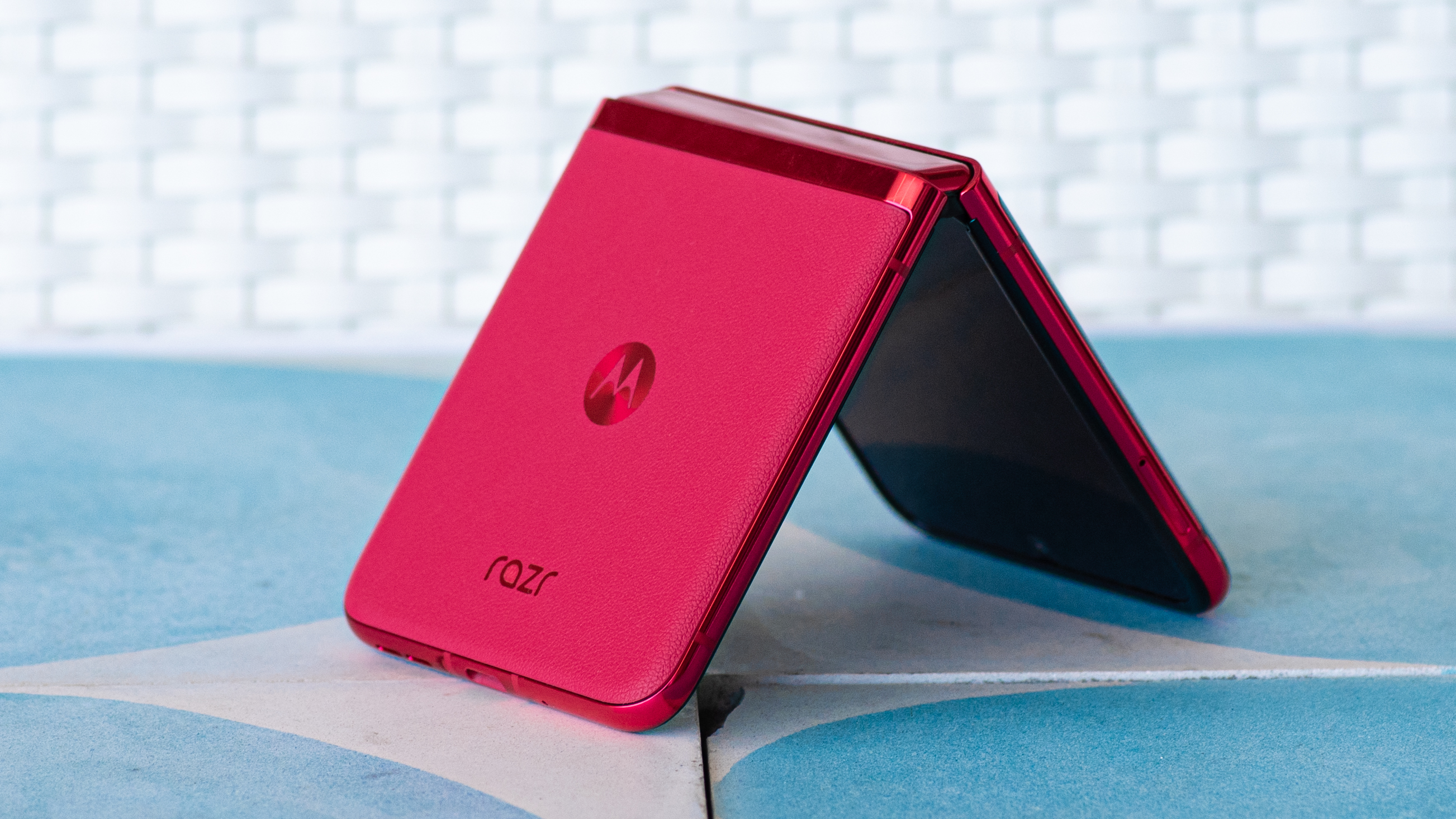
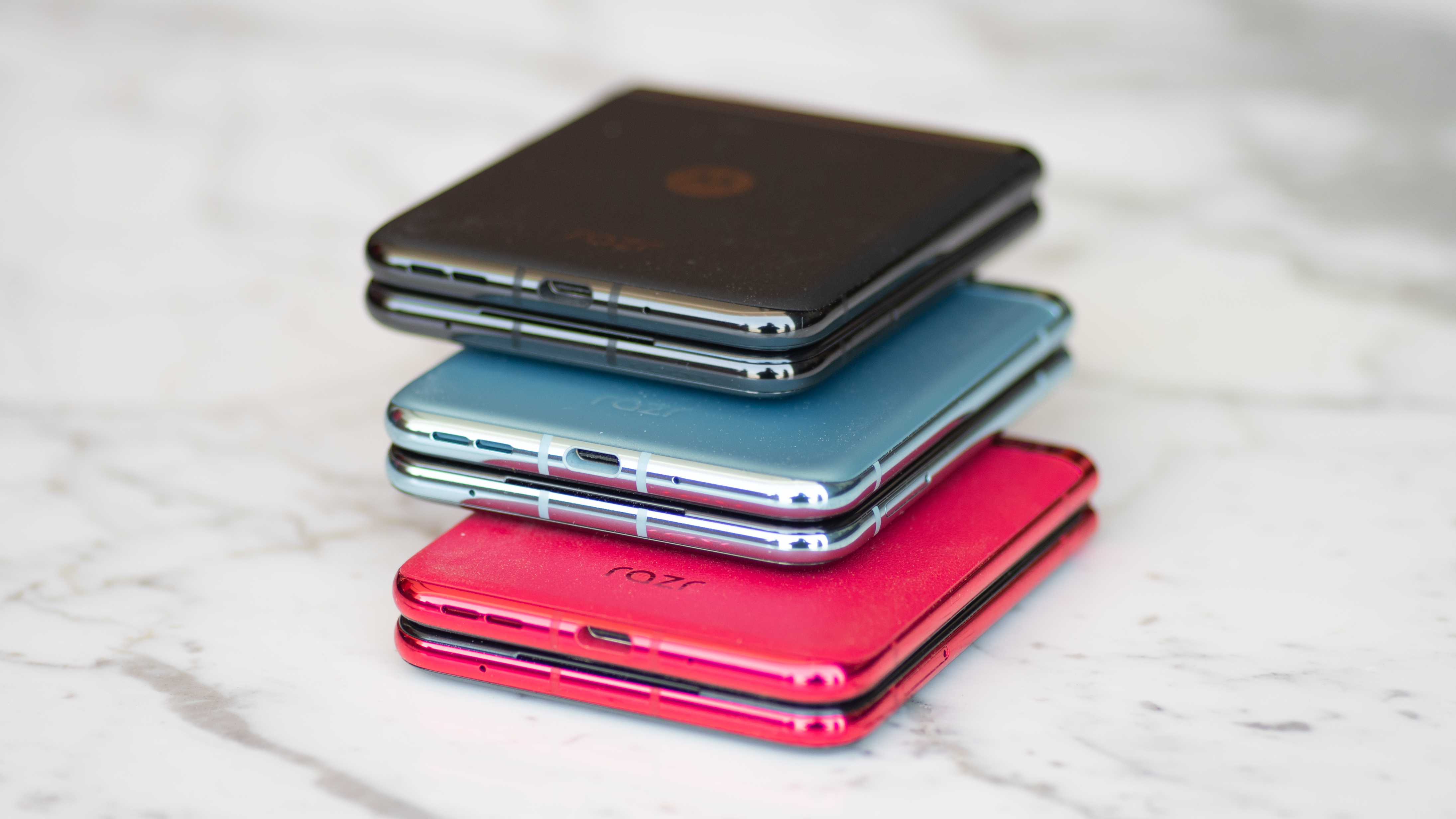
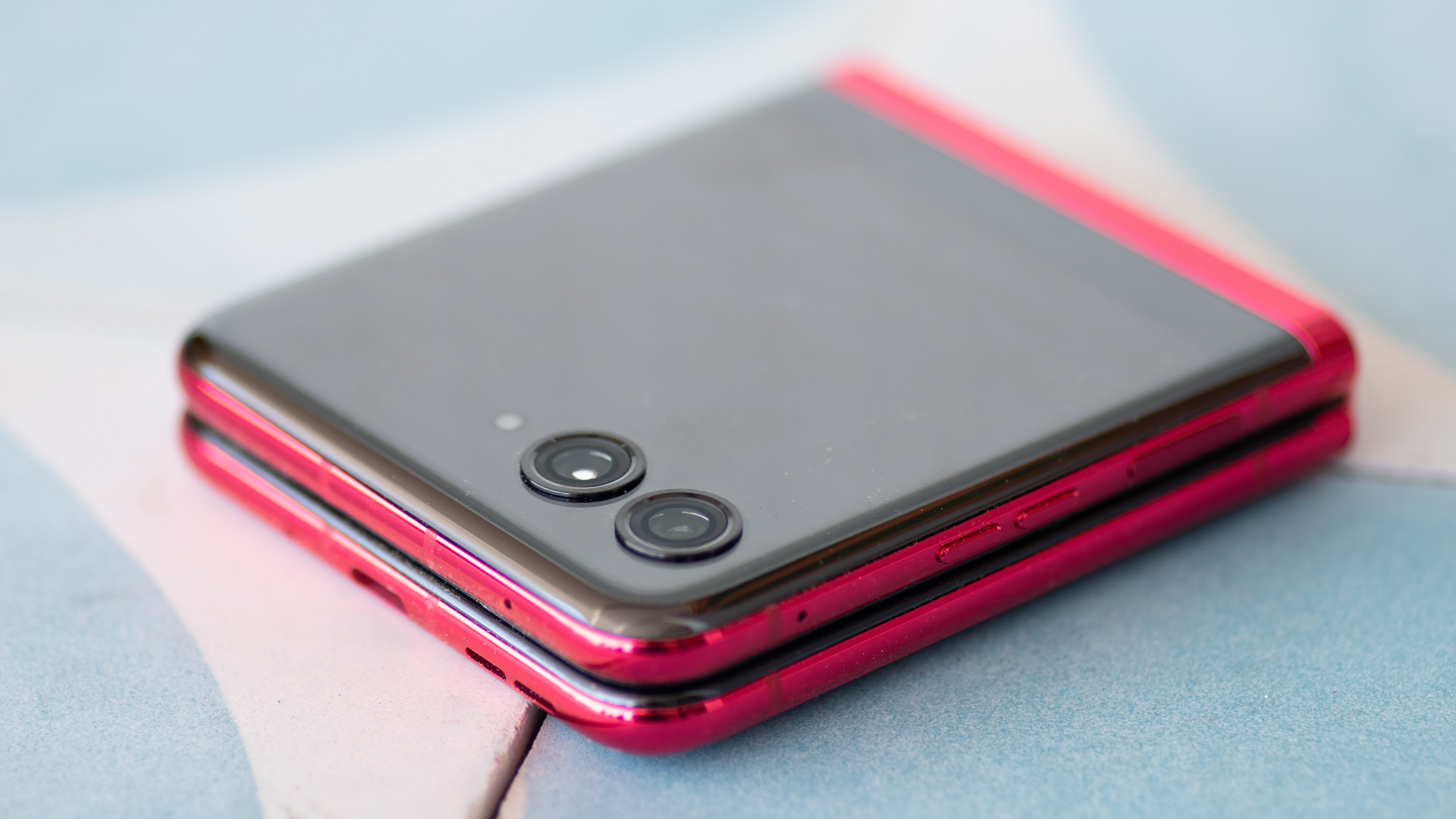
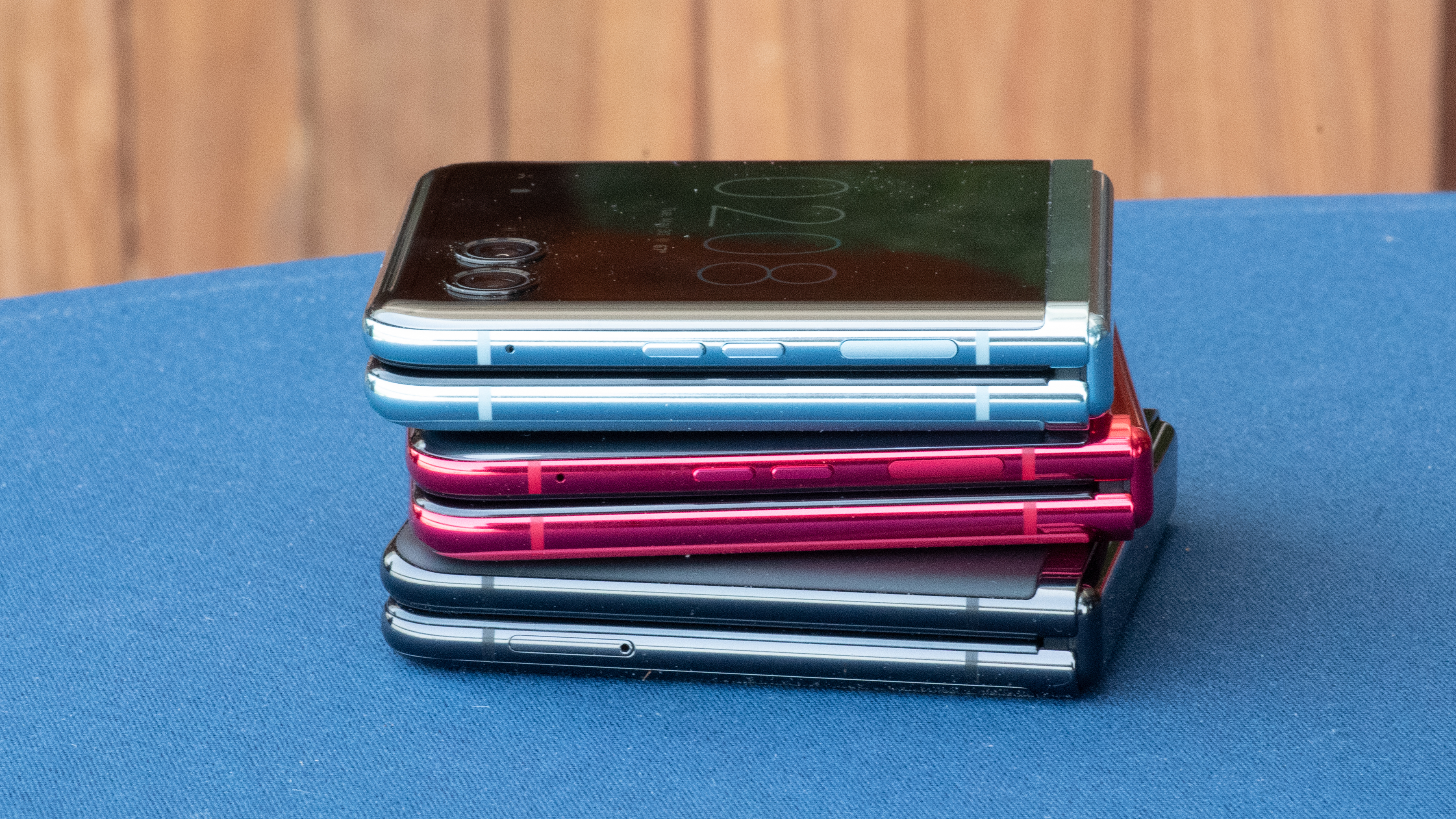
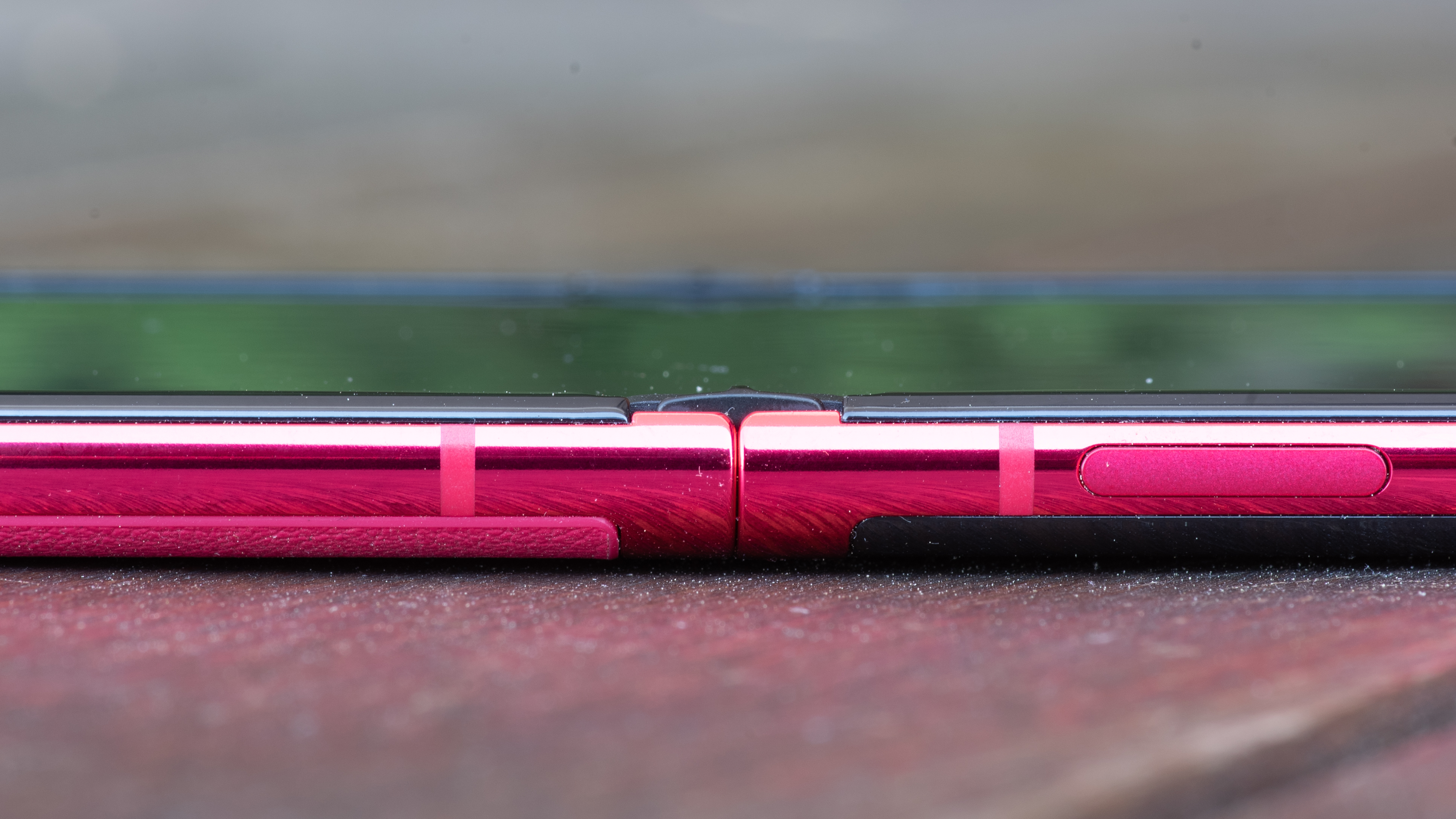
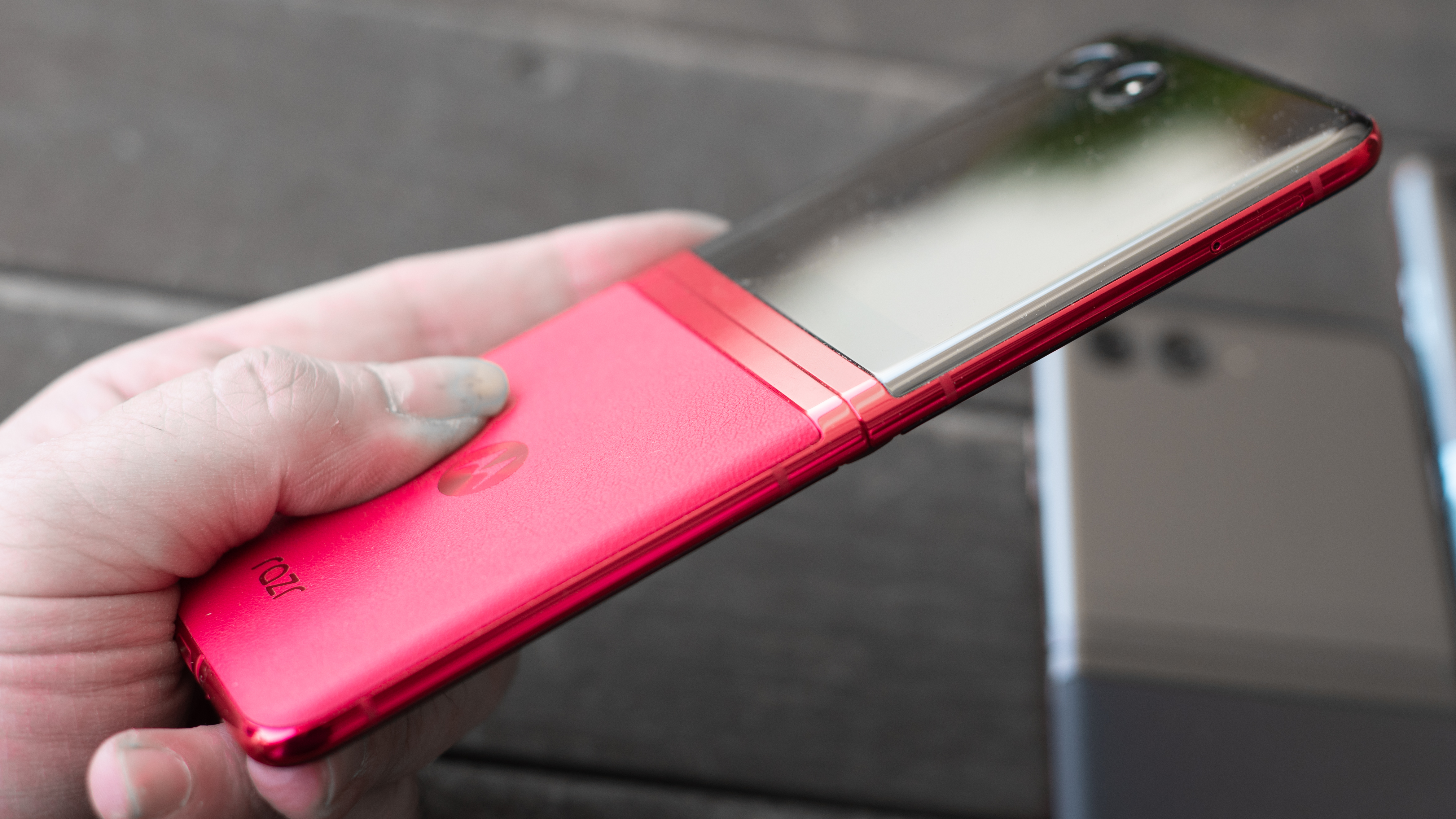
Motorola Razr Plus: displays
- Seriously, that cover display is huge
- It’s also useful enough to read a map or a story
- Internal screen is even bigger this year
The standout feature on the new Motorola Razr Plus is certainly the much-larger cover display, but even the internal screen has been slightly improved this generation. Both the premium Razr Plus and the less expensive Razr use the same internal display.
The faster chipset inside the Razr Plus allows the display to refresh at up to 165Hz, while the slower Snapdragon 7 Gen 1 chipset in the base Razr (as a reminder, that's the Razr 40 in Europe and the UK) can refresh the display up to a still-respectable rate of 144Hz. The cover display is also fast, redrawing at a sprightly 144Hz too.

This huge, 3.6-inch outer screen is the cover display you want on a folding flip phone. It’s large and clear, with plenty of pixels. You can easily read a map using it, so Spotify and fitness tracking widgets are no problem at all too.
In my brief time with the Razr Plus, using the cover display was intuitive and responsive. It starts with some basic widgets, but you can also flick around and find a much larger list of apps that support the display directly.
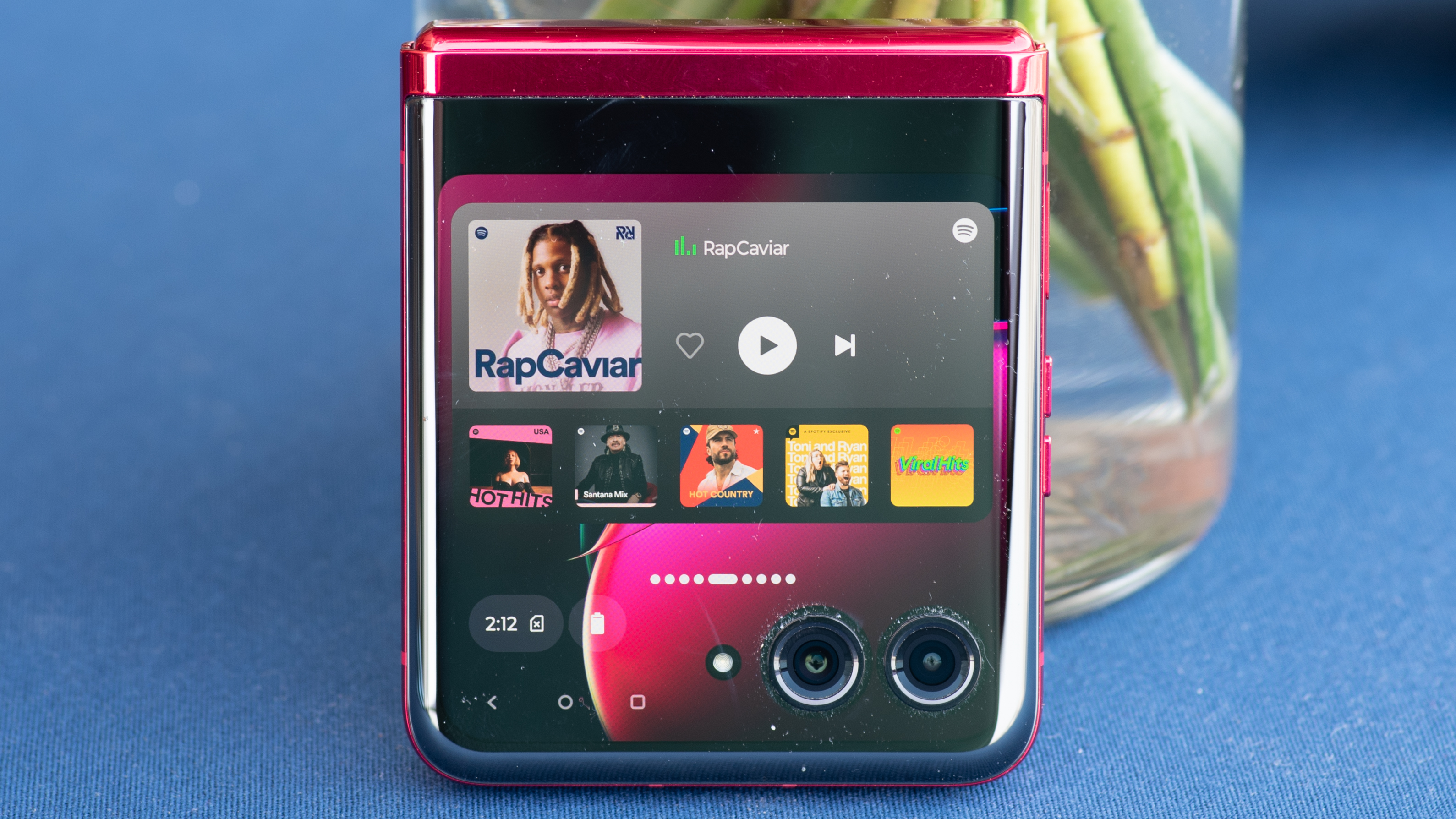
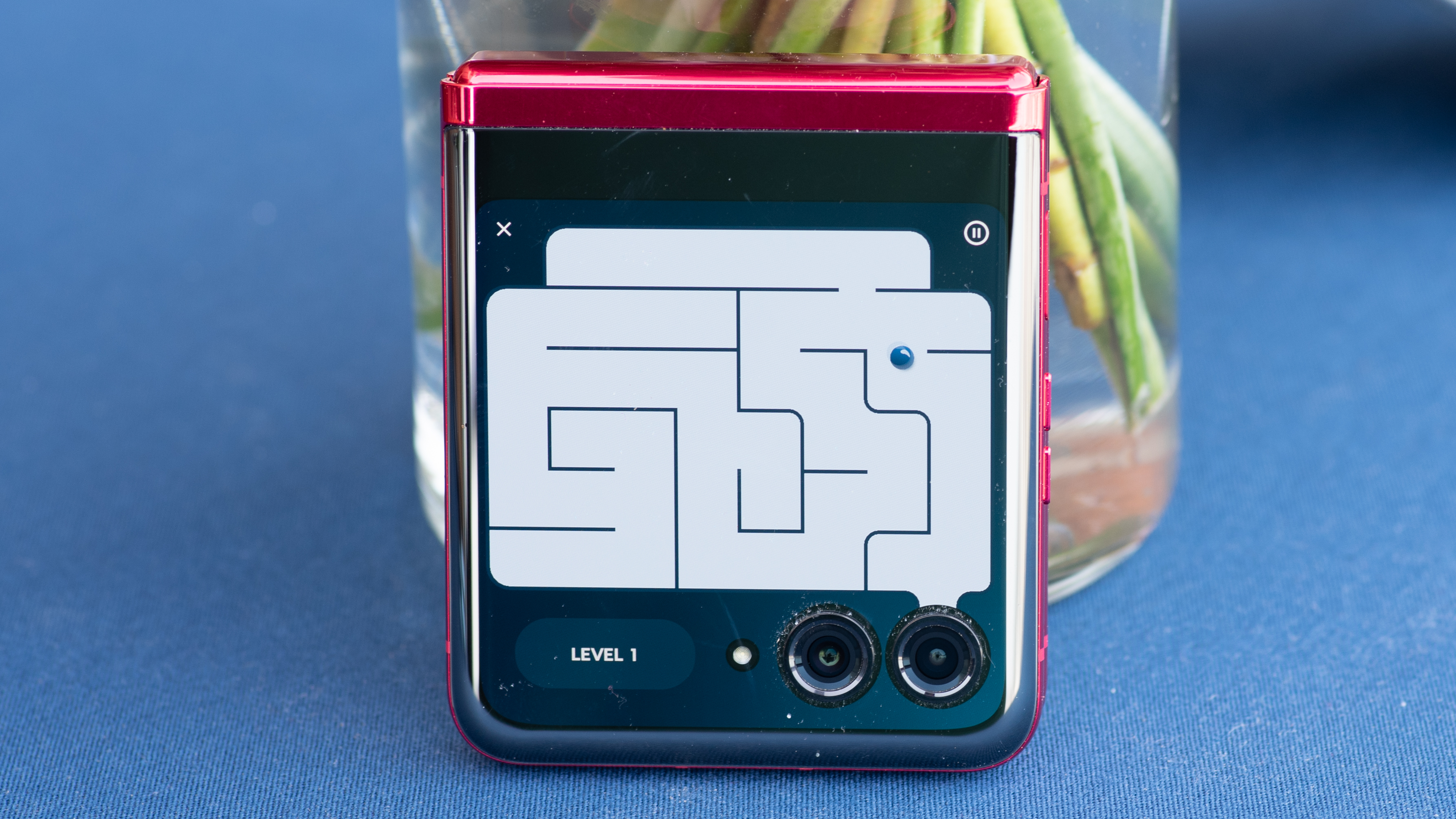
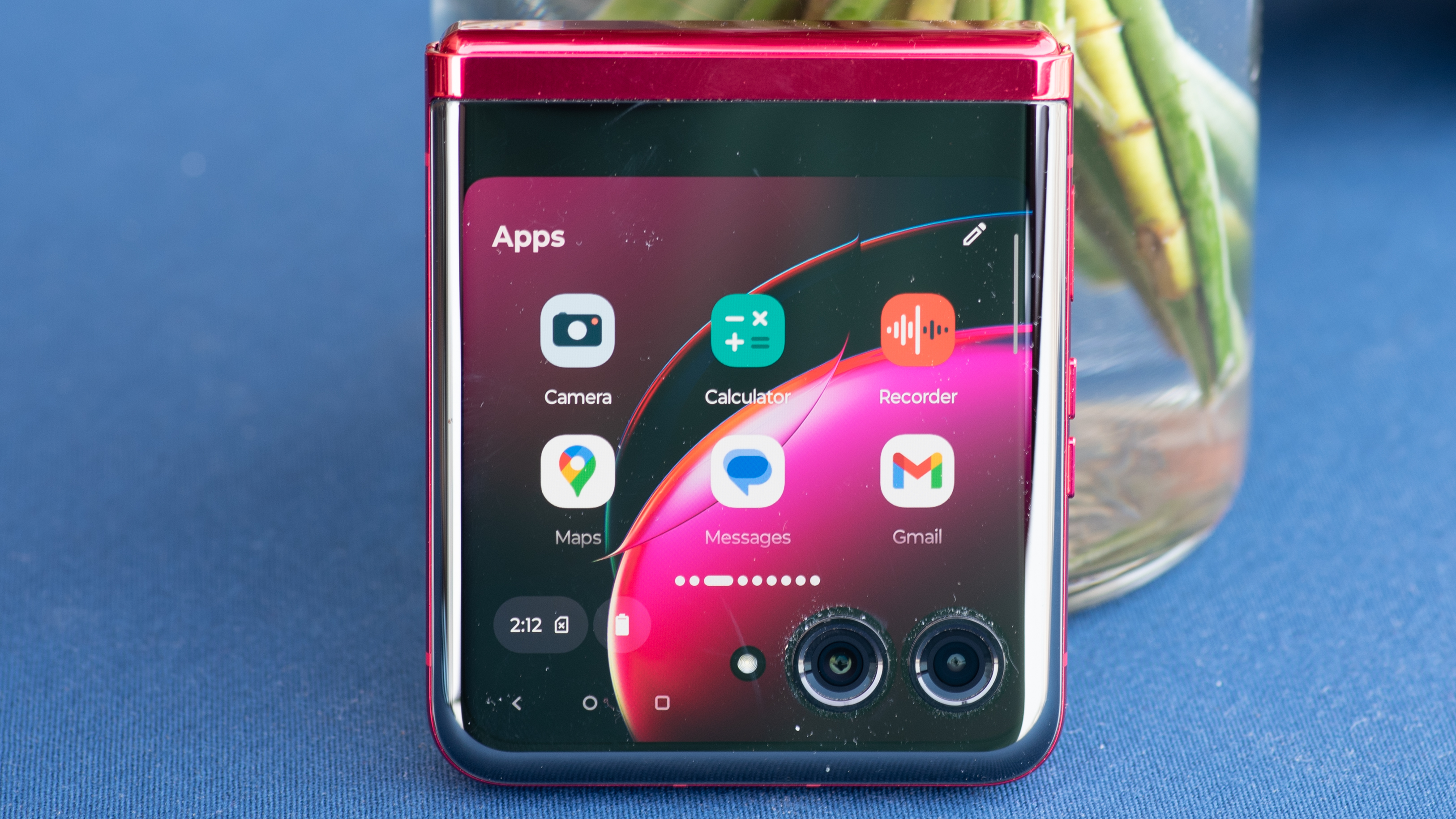
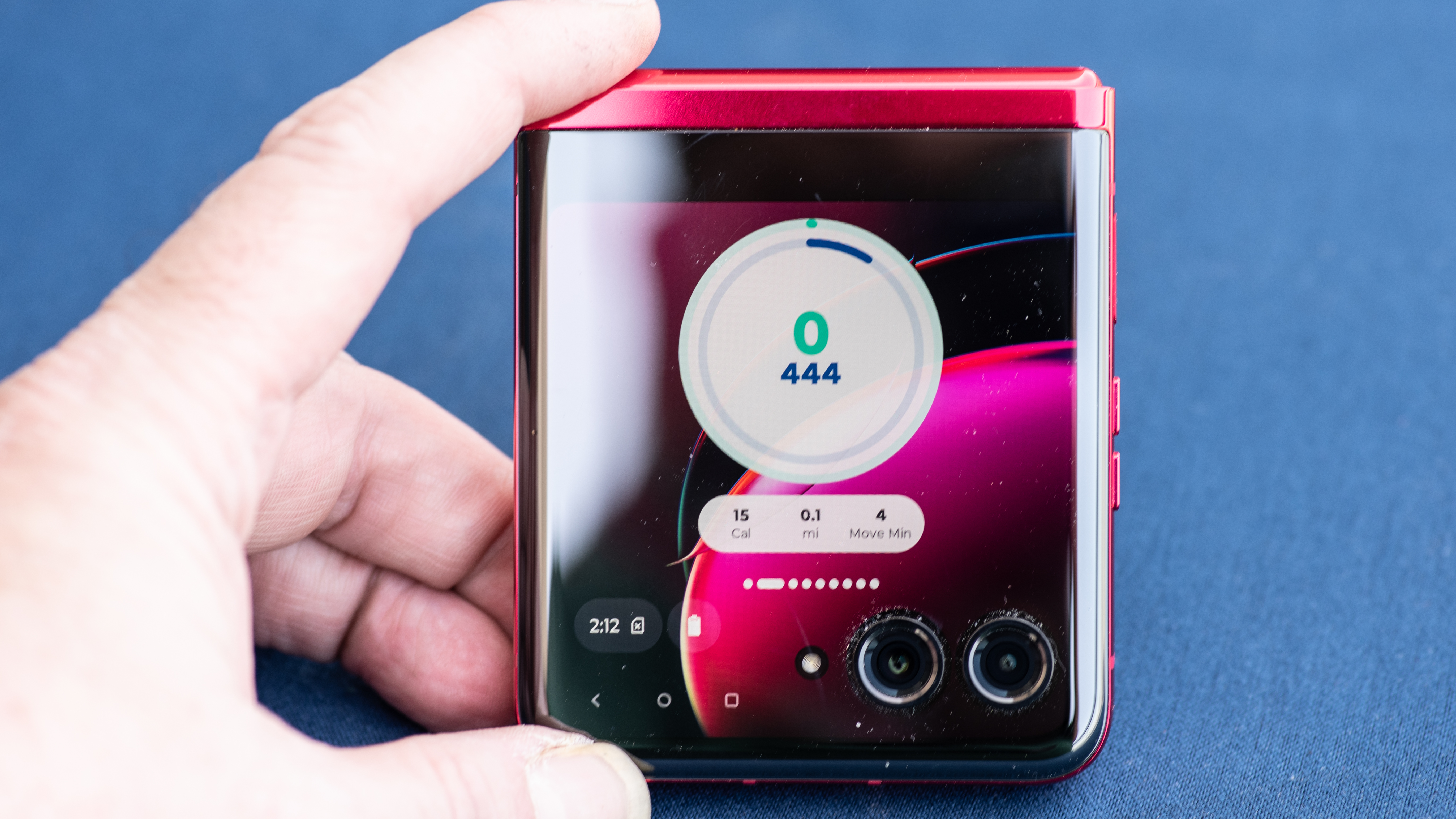
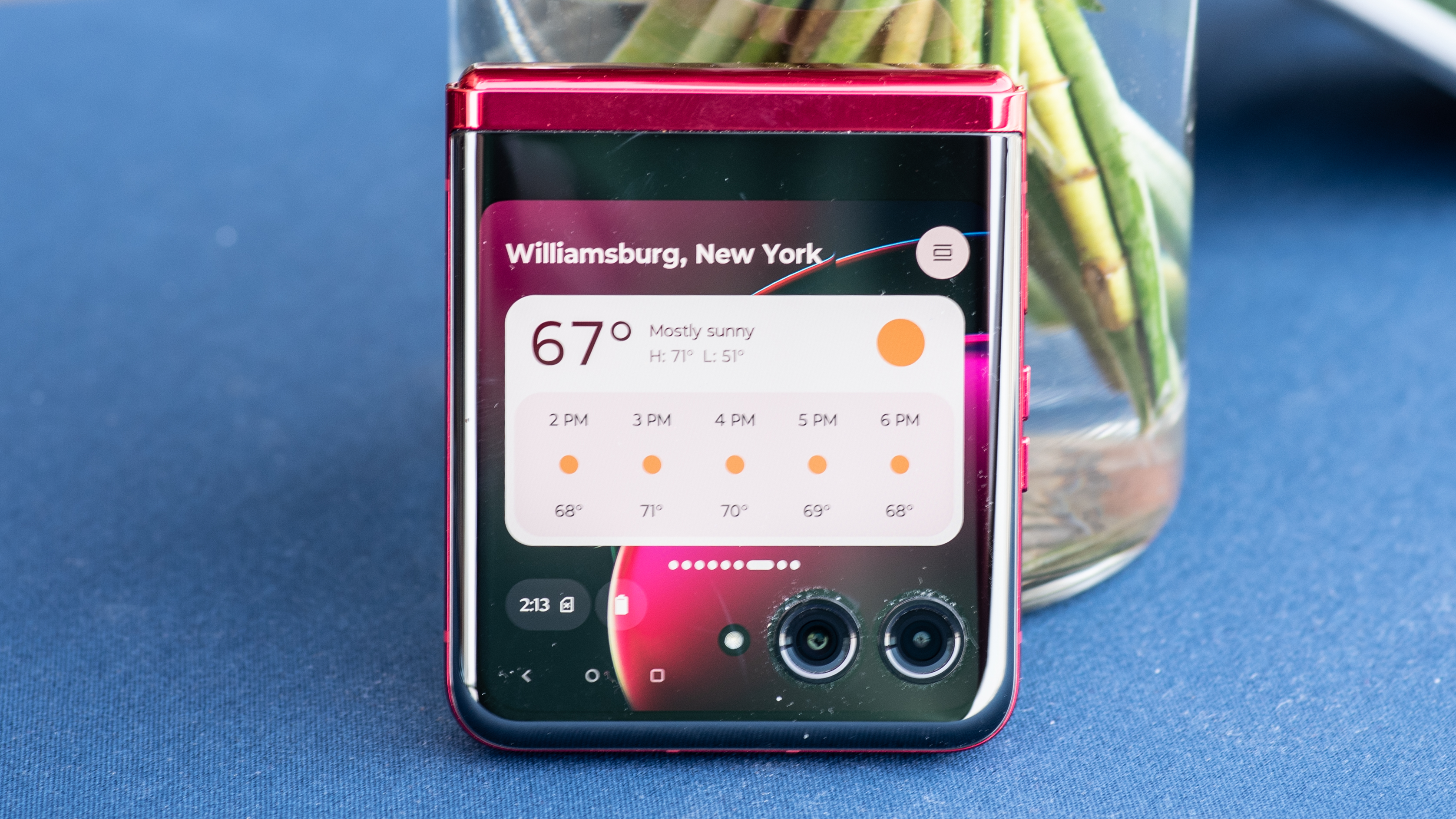
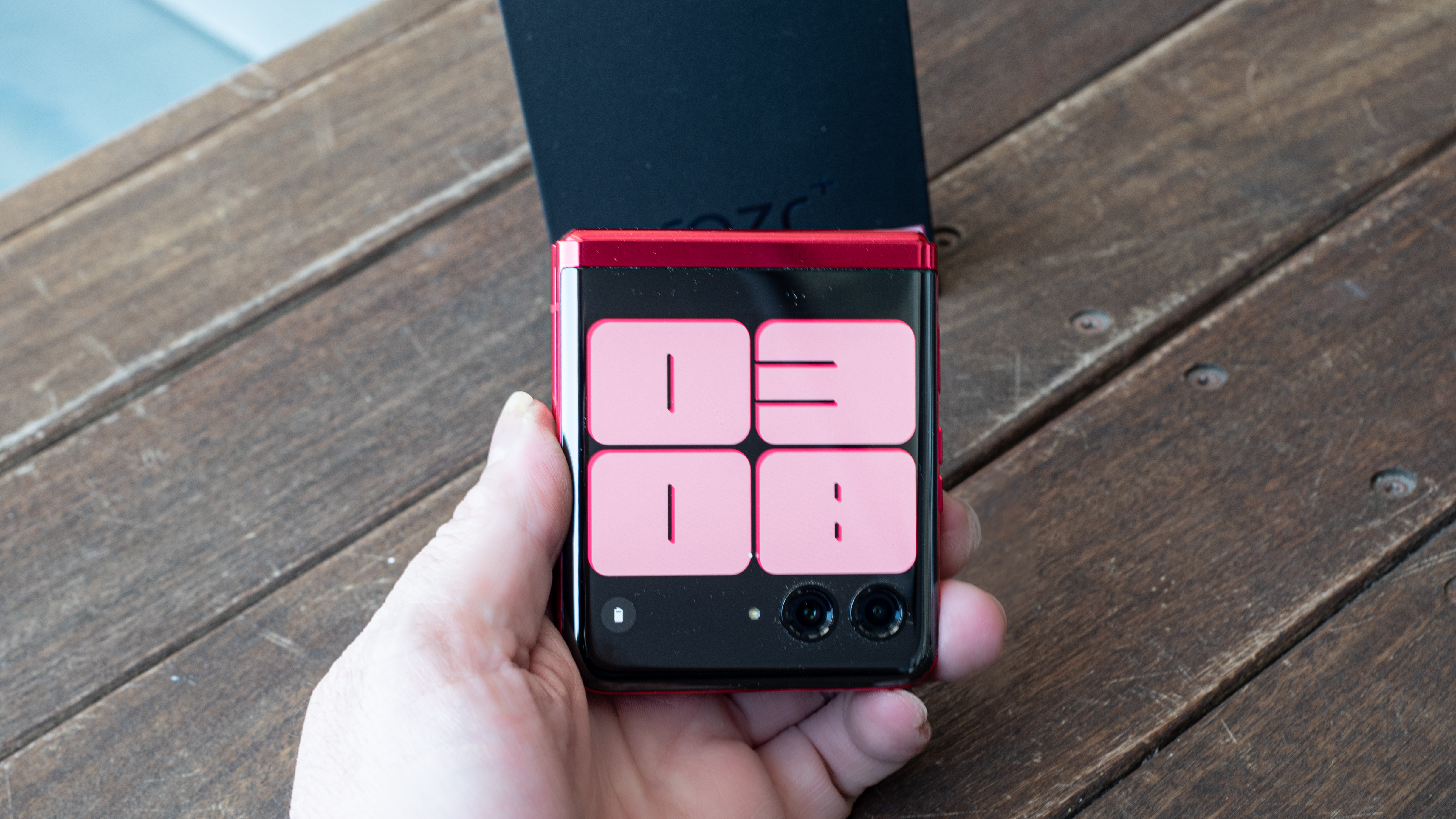
Motorola has put some nice design work into the options available for the cover display. There are a number of cute little clocks with animated progressions, including a cartoon cow that changes activities throughout the day. There are also games that have been specially designed to take advantage of the cover display, including a cool marble maze game.
The big folding screen on the Razr Plus is quite comparable to what Samsung offers on the Galaxy Z Flip 4, so I’ll be very curious to see if Samsung ups its game in any way with the next Galaxy Z Flip. The Razr Plus has a faster refresh rate, since the Flip 4 can only handle 120Hz. Both displays have the same resolution at 1080 x 2640 pixels, though since the Flip 4 display is smaller it is technically sharper, packing more pixels per inch (ppi).
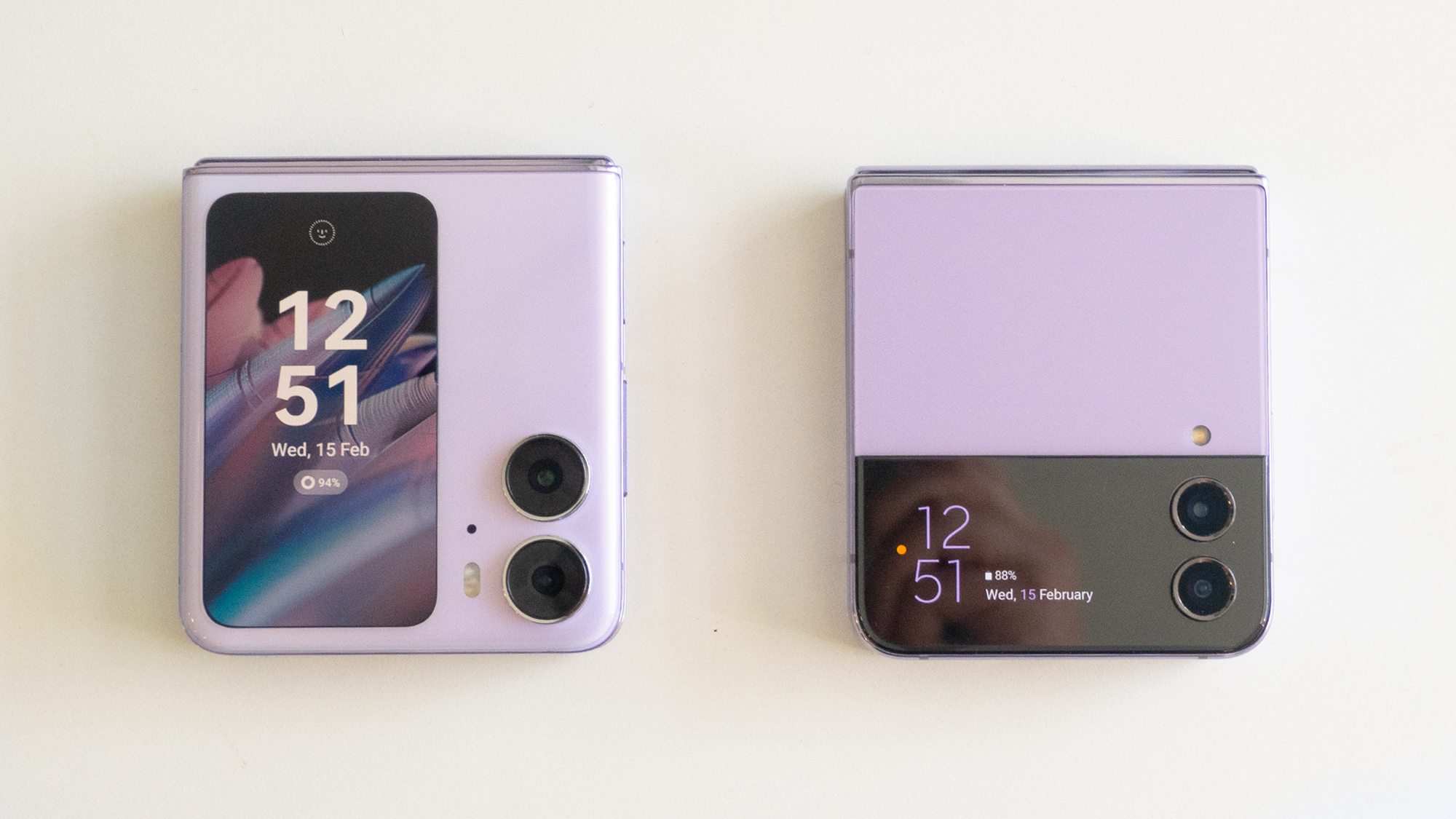
US buyers won’t recognize the Oppo Find N2 Flip, just like the Motorola Razr 2022, a folding flip phone sold in China and throughout the rest of the world but not in the States. That phone has a larger cover display than the Galaxy Z Flip 4, but it is much narrower and packs far fewer pixels than the Motorola Razr Plus'.
The new Razr Plus – like the Oppo N2 Flip – uses LTPO technology on its big internal display. This power-saving tech hasn’t been featured on a foldable flip phone we’ve seen from Samsung or Motorola, though it’s frequently part of the best conventional candybar smartphones.
Motorola Razr Plus: cameras
- Could have great low-light performance
- Wide aperture lens is impressive
- Very low resolution compared to competitors at this price
Of all the Motorola Razr Plus features, none leave me with more questions than the camera setup. At first glance, these cameras appear to be a major downgrade, from 50MP to 12MP imaging. A closer look reveals some impressive specs, however.
Motorola claims the Razr Plus' main sensor sports an aperture as wide as f/1.5, which is almost unheard of on a smartphone. A smaller f-stop number means a wider aperture, and a wider aperture means more light hits the sensor.
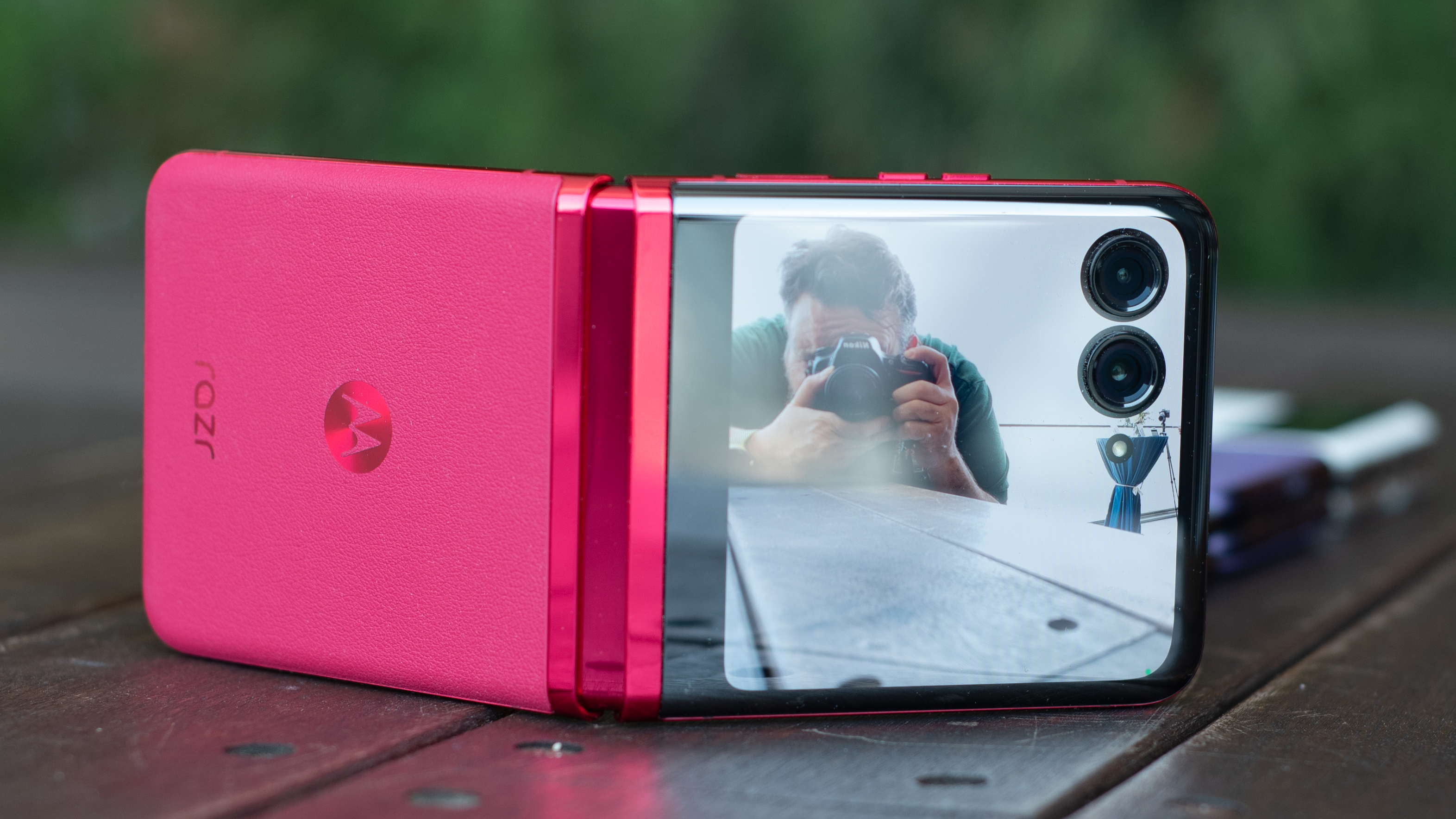
The difference between a narrower f/1.8 lens – like you’ll find on the iPhone 14 Pro and the Galaxy S23 Plus – and an f/1.5 lens is a huge amount of light. In fact, Motorola says that its f/1.5 lens lets in up to 44% more light than a comparable f/1.8 setup.
The newer Razr Plus may have fewer megapixels than the Razr from 2022, but those pixels are much larger, 1.4μm compared to 1.0μm. That means the older phone had a larger sensor overall, but we could still get better clarity from the new model, especially in low-light conditions, where larger sensor pixels will pick up more photons.
The Samsung Galaxy Z Flip 4 has a very similar setup, with a 12MP camera that uses very large sensor pixels, though Samsung’s pixels are 1.8μm, which is a big difference. If Motorola is going to be the winner, it will come down to that wide aperture lens and all of the light it collects.
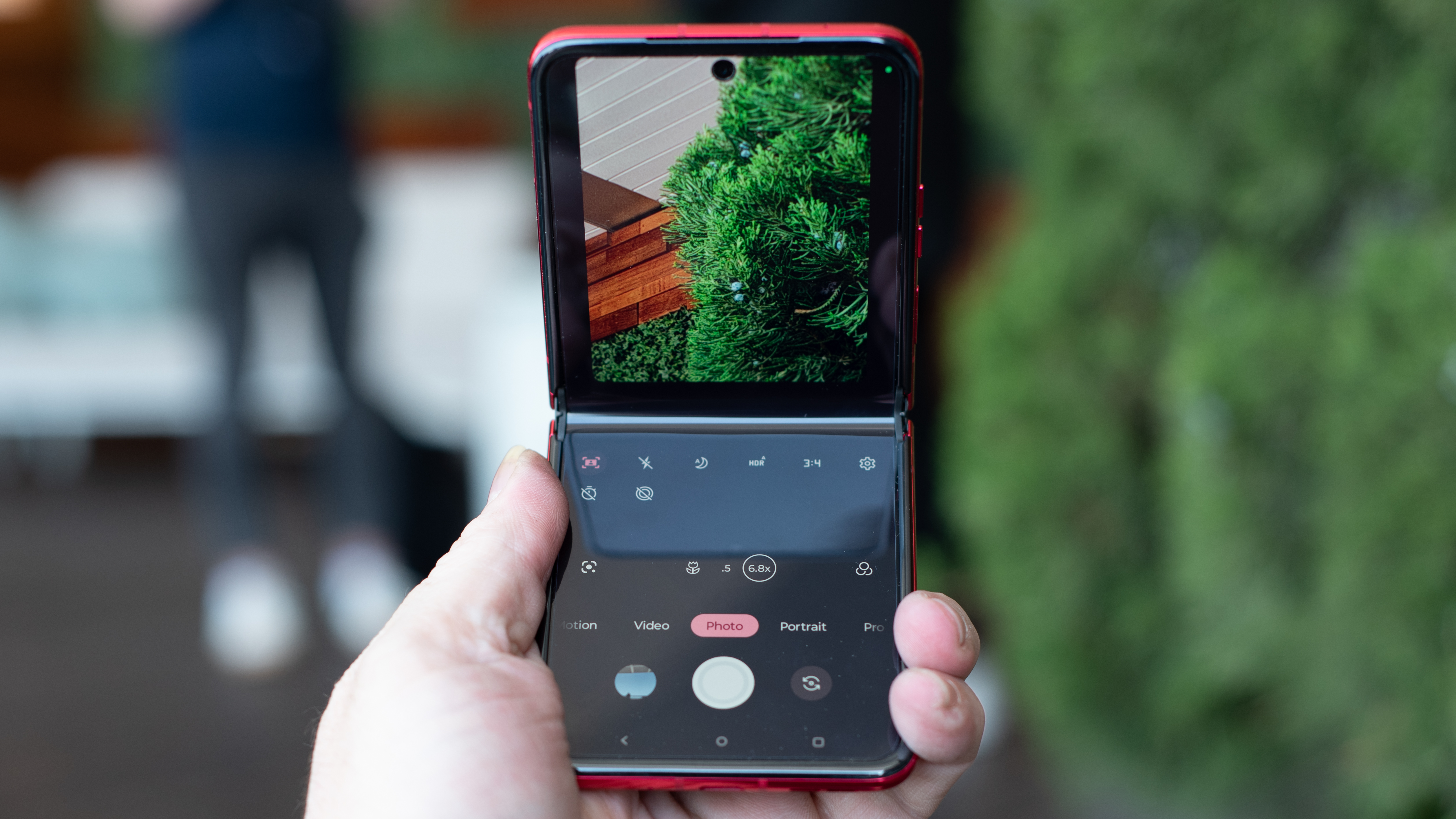
There is also a 13MP ultrawide lens that handles so-called macro photography. I’ve used Motorola’s version of macro shooting and I’m intensely skeptical. The secondary camera looks very similar to the second sensor on the Galaxy Z Flip 4, down to the pixel size, though the Flip has a wider field of view.
The front-facing camera is a big 32MP sensor that combines every four pixels into one, in a process called pixel binning. You get an 8MP image that should look better because it’s taken the average of four pixels for each resulting one. Don’t worry, you’ll rarely use that camera.
That’s because the best thing about the Motorola Razr Plus – from my hands-on time – is the way it handles selfies and photos with people. Everybody gets a great view. You can point the main camera at yourself and see yourself in the cover display. You can aim the camera at a group and they get to see themselves pose.
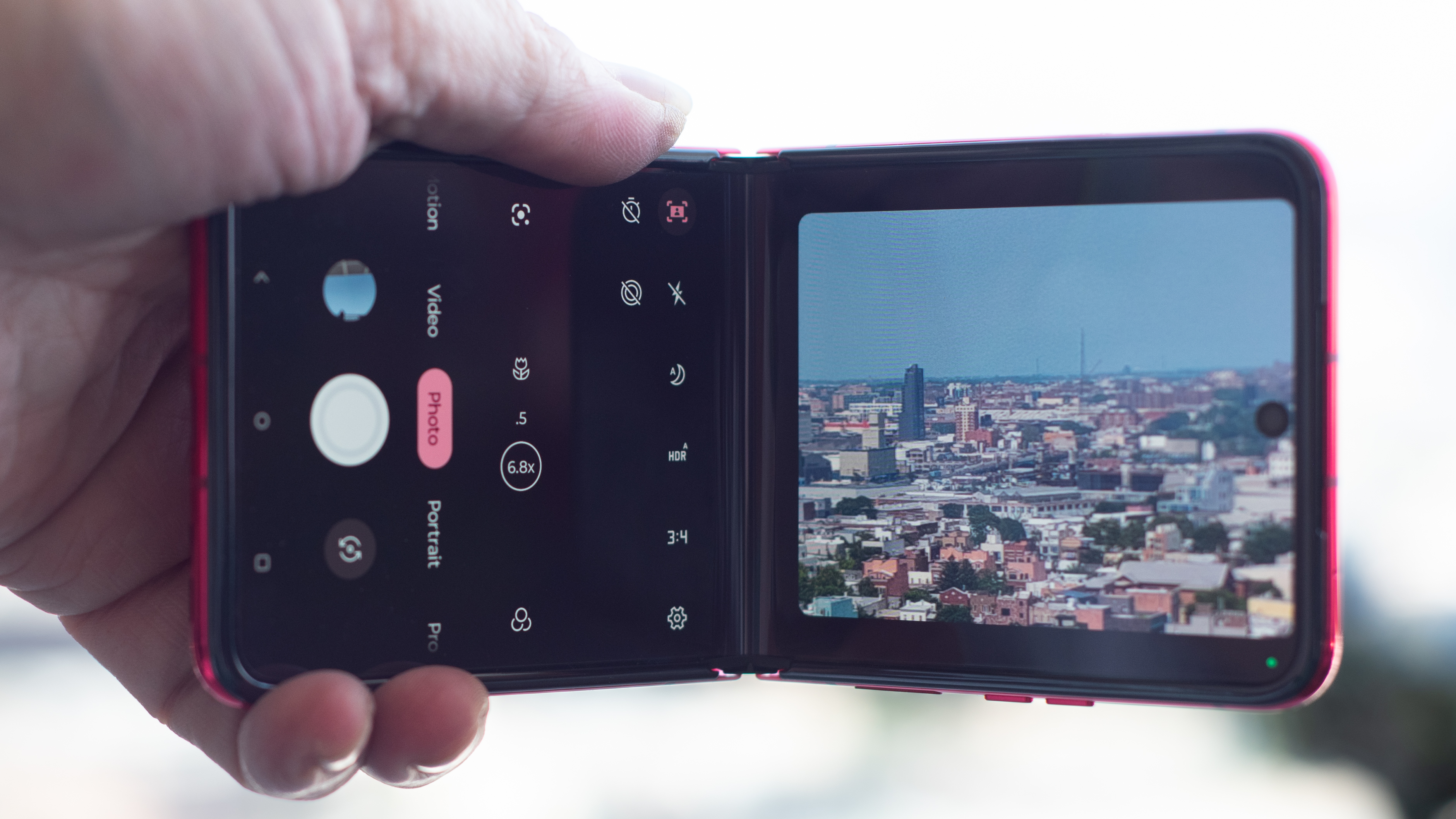
Motorola doesn’t just make the main camera more useful with the cover display, it makes taking photos fun. Moto has totally embraced the camera and everything it means to flip phone users.
There are special photo booth modes that take four consecutive shots with time to pose in between. There are split screen modes for video recording. The Motorola Razr Plus is made to be a camera, almost more than it’s made to be… everything else. It works nicely and I’m excited to see what sort of image samples it can produce.
If I had to choose one spec to boost on any smartphone camera, it would be the aperture, and it’s rare to see such a wide lens as this. Combined with bigger sensor pixels, I’m very hopeful that the Motorola Razr Plus will excel at portrait shots, even under low-light conditions. I don’t expect much versatility, but for the type of personal shooting you’ll want to do with this phone, Motorola has chosen the right camera array, it seems.
Motorola Razr Plus: performance and specs
- Last year’s best: the Snapdragon 8 Plus Gen 1
- Lots of specs from 2022's best, actually
- No real spec boost, except the cover display
When a phone family gets regular updates, we usually see a major design change one year, then a major spec boost the next. We call this the tick tock pattern, established by Apple since the days of the iPhone 4 and iPhone 4S. The Motorola Razr Plus is a tick. It gets a huge design change with totally new elements that make it great. Sadly, the specs will have to wait for the tock.
It makes sense, if you’re getting a much larger, high-quality cover display, you need to cut some costs elsewhere. Motorola didn’t use a slower mobile platform, but sticking with the Qualcomm Snapdragon 8 Plus Gen 1 – while the Gen 2 chipset is already available on other flagship phones – means the Razr Plus starts at a disadvantage when it comes to performance.
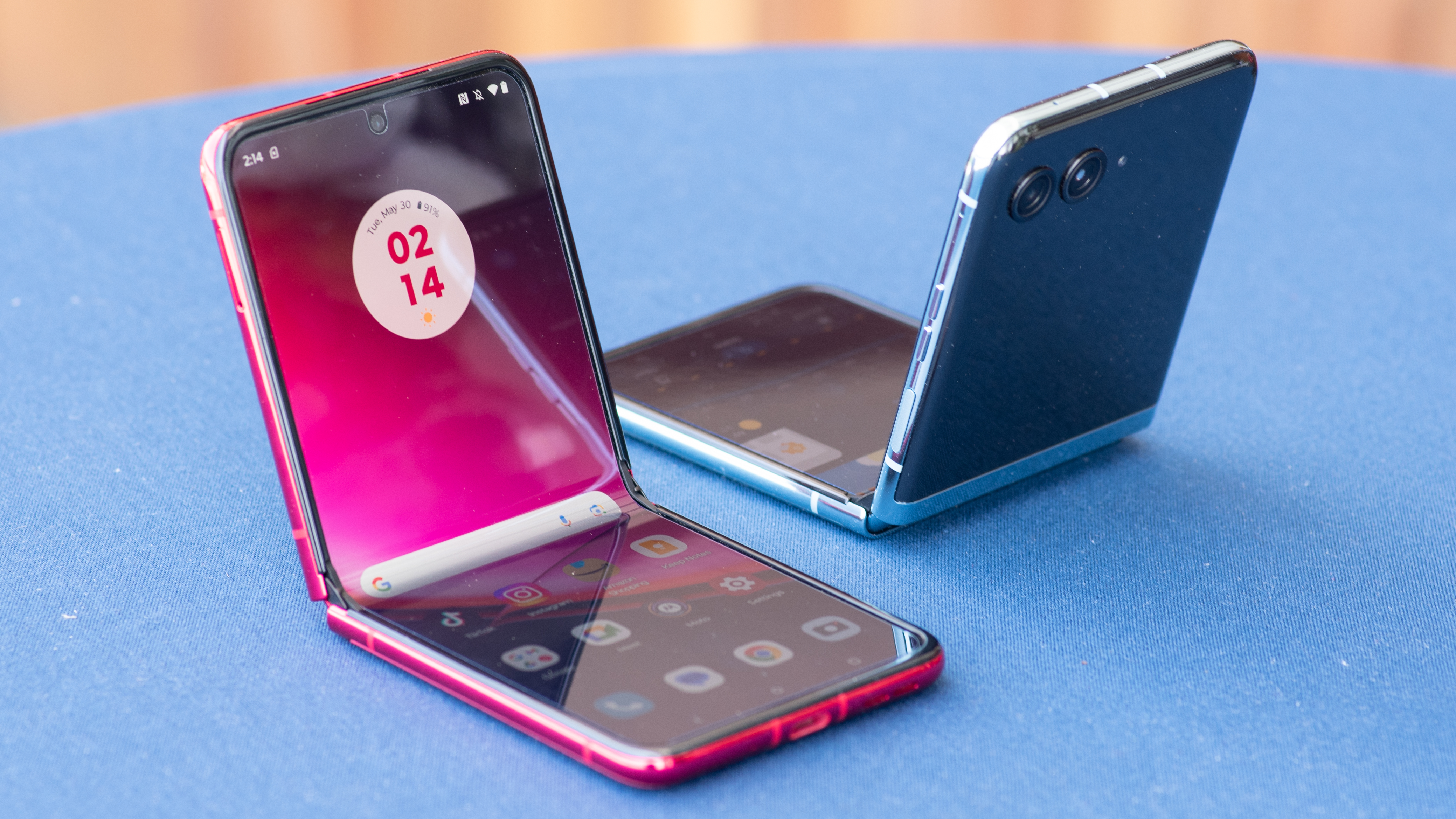
Overall, in terms of specs, it’s hard to find a clear win for Motorola against rivals, besides that larger cover display. Which is sort of like saying that a convertible isn’t much fun if you don’t consider the sunshine. The cover display is the spec upgrade over last year, and it’s a big one, offering an entirely new screen to use, not just a space for notifications and song titles.
That said, the mobile platform is the same as its major rival, the Galaxy Z Flip 4. The RAM and storage capacities are comparable. The Razr Plus uses a 3,800mAh battery while the Galaxy Z Flip 4 packs 3,700 mAh. Moto's phone charges at 30W, while Samsung charges up to 25W.
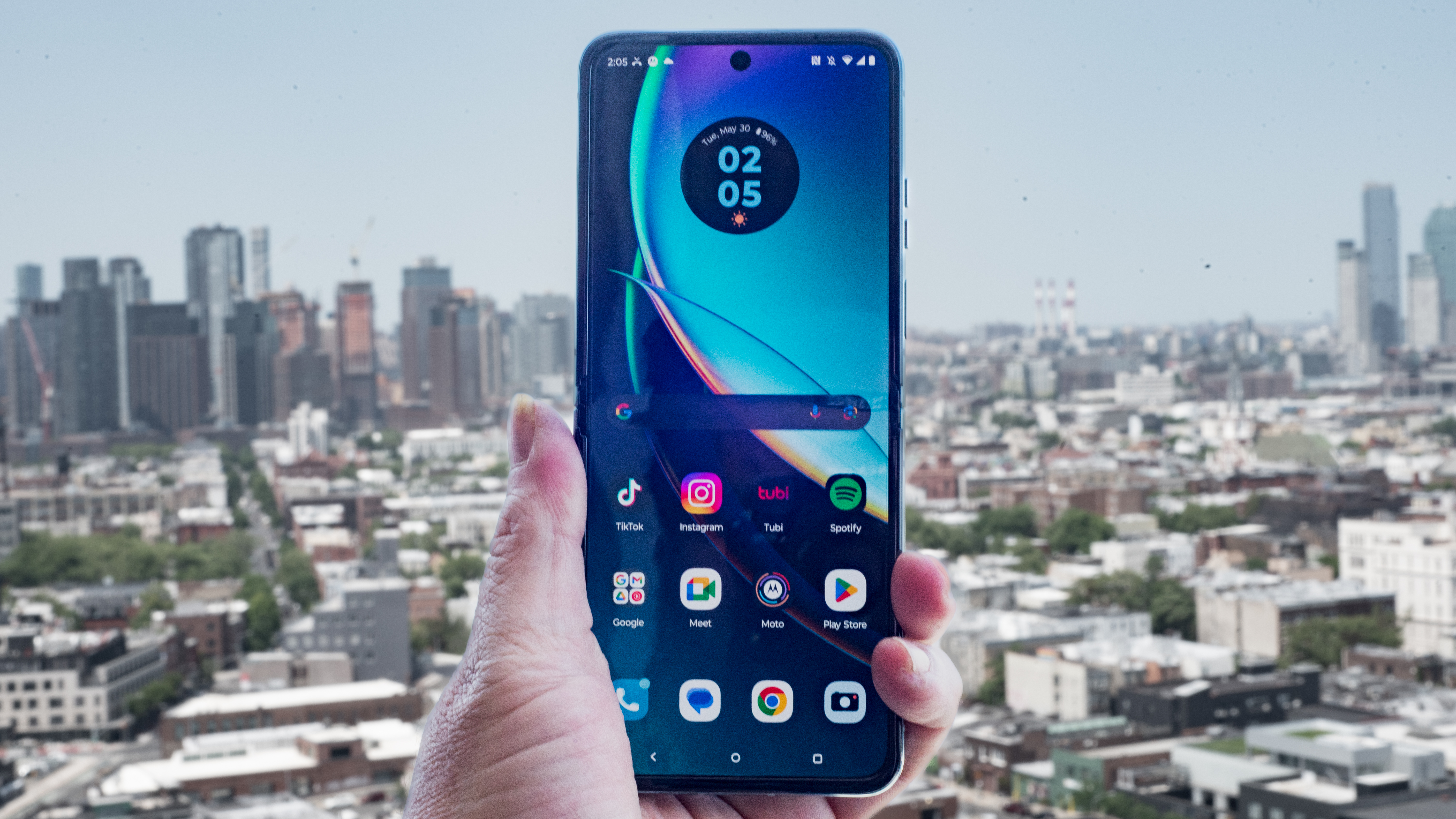
None of this matters much for two reasons. First of all, Samsung has a brand new phone likely being rolled off the assembly line as Motorola speaks about its new Razr(s). We expect a new Galaxy Z Flip 5 before the end of August, and possibly much earlier this year.
Second, Motorola isn’t competing on the same specs as Samsung. It’s competing on design and usability. If the cover display is useful enough, the colors are enticing, and that camera delivers on some unspoken promises, it could be good enough to hold off Samsung until we get to the tock cycle, for a serious spec boost.
Motorola Razr Plus: software
- Mostly looks like Google’s own take on Android
- Cover display gets useful widgets
- Can also continue most apps on cover screen
On the interface and software, you won’t find much difference from the best Motorola phones currently out there, which means a light but sure touch on Google’s simple Android 13 designs. This isn’t a gaudy Samsung phone, with its overbearing One UI.
Motorola adds nice features and gesture shortcuts, and one of the nicest things is the consistency. If you’re a Motorola fan, the same chop to turn on the flashlight, or twist to turn on the camera, work wonderfully on the Razr Plus. The cover display quickly steals the show, though.
For better or worse, there’s no more ignoring the Motorola Razr Plus when it’s closed. You now have half a smartphone screen at your disposal. If you’ve ever run apps in a split screen window on your phone, you get the same amount of room on the cover display. It’s enough to read a story on your favorite tech web site or navigate using maps.

Motorola has three levels of cover display you can dive through. At its face it’s just a clock, or you can swipe for a Spotify widget. You can dive a bit deeper to get to a sideways scroll of apps and widgets that work nicely with the square screen. The biggest surprise was the handful of custom games that Motorola commissioned to work specifically with the cover display.
If you’re working on something on the big internal screen, you might also be able to continue your work on the cover display, depending on the app. If you start a story in Chrome, for instance, when you close the phone you can tap a button in the corner of the cover screen and it will open your browser window where you left off. Not every app works, but many apps I tried shifted to the cover display with no trouble.
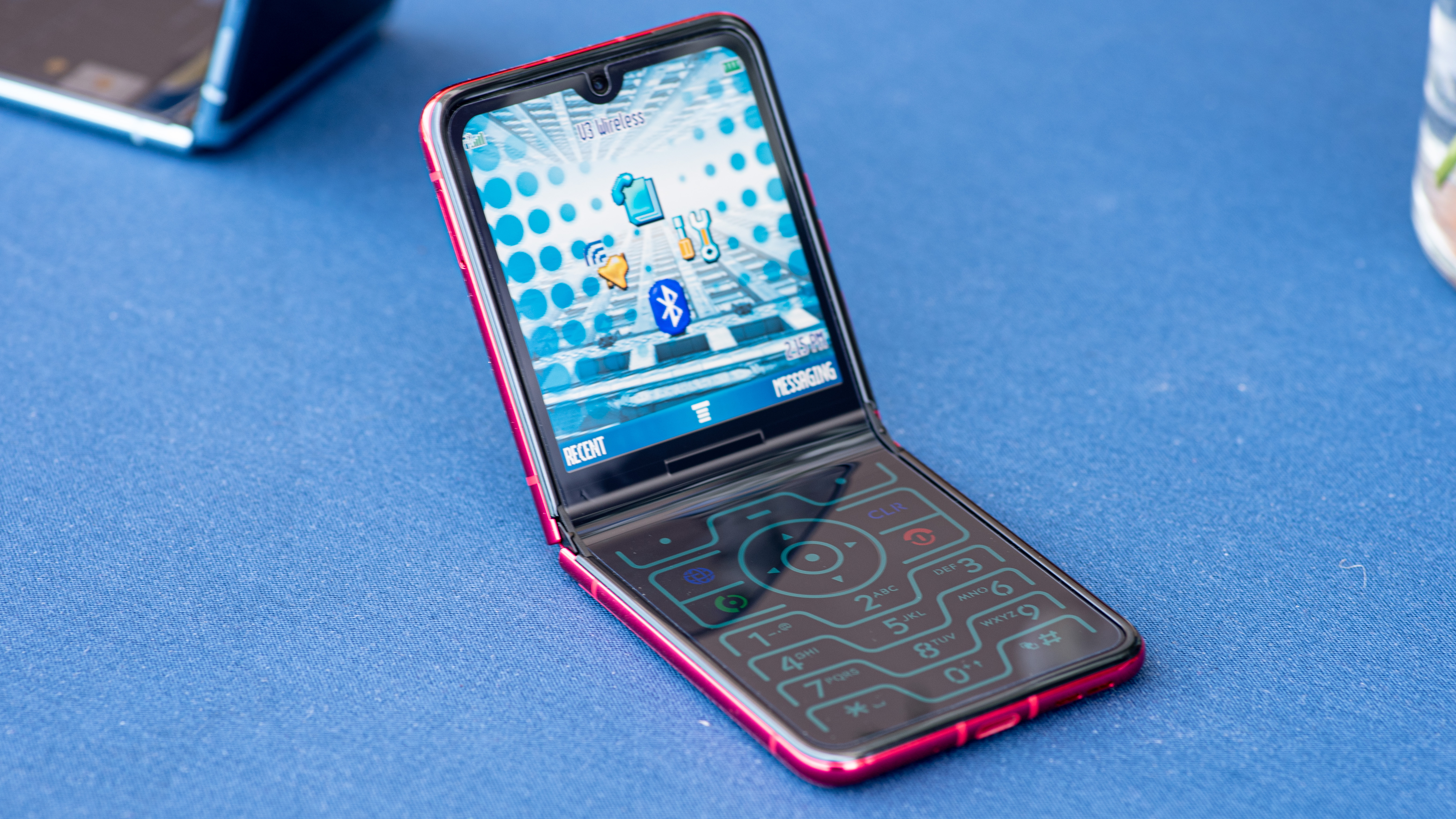
The Motorola Razr Plus ships with Android 13 on board. It will only get three years of software updates from the day it hits shelves, so we can expect support up to Android 16, hopefully. That isn’t quite enough in my book and Apple gives its users five or six years of major OS update support, if not more. That’s on the cheapest iPhones, not just the most expensive flagship models too.
Motorola Razr Plus: battery life
- It has two screens, that means less battery life
- An even bigger battery would be great
- Oh wait, the base model Razr has a bigger battery
Battery life could be tough on the Motorola Razr Plus, and Moto reps dropped hints that it may not last all day if you use it aggressively. That is, there’s a second display up front, and that display drains the battery. Now that you can use the Motorola Razr Plus when it’s closed, you’ll probably use it more. So it goes.
It’s no coincidence that the Motorola Razr without the cover display also has a larger battery inside, and Motorola proudly proclaims that the less expensive phone will last a full day. Without the internal guts required to run that extra screen, Motorola squeezed an extra 400mAh into the battery cell for 4,200mAh versus the 3,800mAh battery on the Razr Plus.

It’s an interesting conundrum, since Motorola decided to head in opposing directions. It wanted a larger display to stand out from the flip phone crowd, but that drains the battery much faster. It wanted to be the thinnest of all flip phones, at least when closed, but thinness also equates to a smaller battery cell.
For this reason, as well as the sweet faux leather designs and colors, I wonder if the base model Motorola Razr isn’t a better pick for a lot of folks. It has a larger battery, just enough to finish your day. It won’t distract you and drain power with a dazzling cover screen. Tough call, for sure.
Unlike last year’s model, the Motorola Razr Plus has wireless charging, though the pace is a sluggish 5W. Samsung gives you three times the charging power at 15W, and the Galaxy Z Flip 4 can even handle reverse charging to power up your earbuds, if you forgot to feed them before you left home. Motorola’s phone can’t do that.
Motorola Razr Plus: early verdict
- Nice improvements, especially the cover display
- Lost some of what makes Razr unique
- No standout specs, but the camera has me curious
It’s rare that I spend time with a flagship smartphone and get more excited about the base model than the most premium version, but my time with the Motorola Razr Plus left me impressed, curious, and ultimately envious of what the plain old Razr had that the Plus lacked.
I was impressed by the new design improvements, especially the excellent cover display that beats every other flip phone I’ve seen… so far. It’s not just big, it’s useful and easy to navigate. It’s versatile and powerful, acting as a half-smartphone or a camera viewfinder. It’s also distracting, and it probably drains that battery faster than I’d like. Only quality review time will tell.
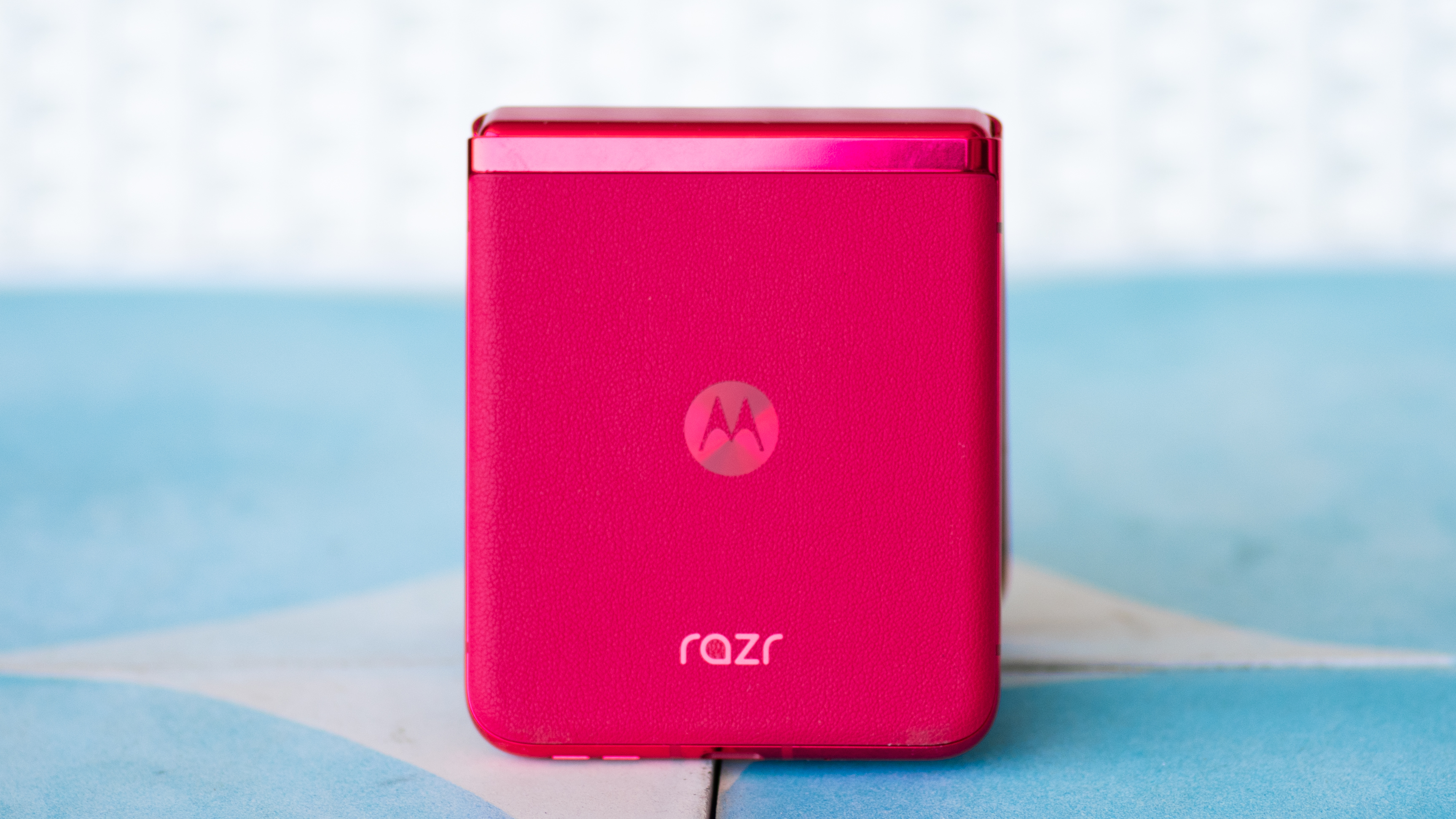
I’m curious about the new camera on the Motorola Razr Plus. I think Moto made a wise choice prioritizing a wide aperture lens and larger pixels over a high pixel count and a distant zoom. It’s not an easy camera story to explain, but if the photos are great, there won’t be any explanation necessary. Still, it’s close to what Samsung offered last year, and there’s a new Samsung on the way, so I wouldn’t expect the giant to sleep on camera upgrades for its next big Flip.
While I like the style of the Razr Plus, I think the basic Razr gets better color options and I really liked the so-called vegan leather finish. It feels great, especially with this flip phone clapped closed. It also looks fantastic in all of the Pantone colors that Moto has chosen. I wish there were more faux leather options and maybe better color choices for the Razr Plus. Viva Magenta is exciting… but maybe too much so.
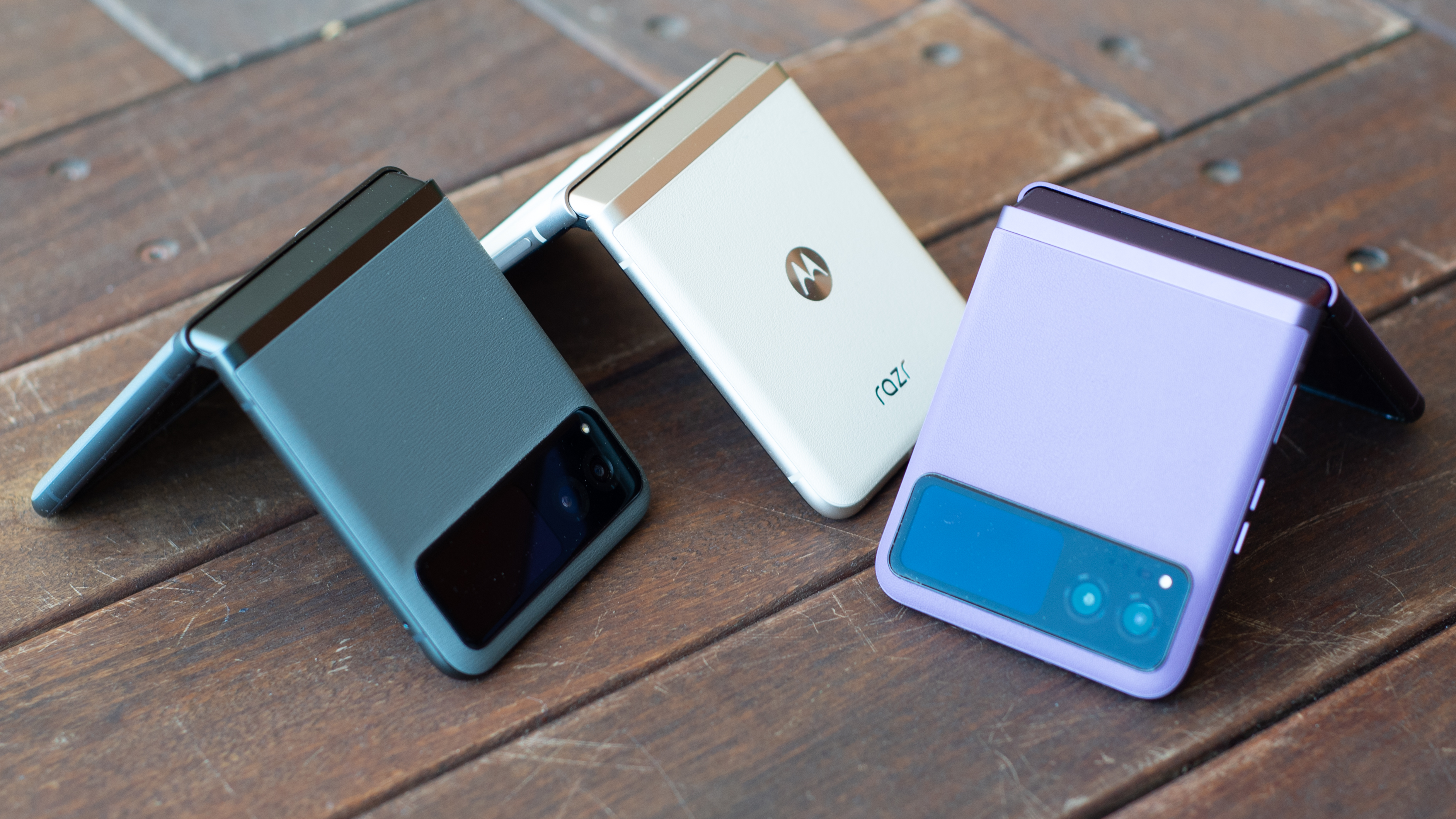
My biggest reservation about the Motorola Razr Plus is with its price. This phone costs the same as many of last year’s models, and it doesn’t do much to upgrade the spec sheet. That means it needs to sell itself on style, experience, and whatever unknown quantity we have yet to experience. It should be an exciting review period.
We’ll have a full review of the Motorola Razr Plus as soon as possible. In the meantime, be sure to read up on the latest foldables with all of our best foldable phones.
First previewed May 2023
0 comments:
Post a Comment